Architectural plants bring bold, sculptural interest to any garden design. Typically evergreen, they offer year-round appeal and maintain strong visual presence through every season. To help you get started, we’ve put together a list of the best architectural plants to define your garden!
Architectural plants bring strong lines, height, and structure to your garden. From the sharp edges of a clipped hedge to the towering elegance of an upright evergreen, they create visual depth and draw the eye. Whether you’re aiming to add formality, highlight entrances, or define spaces with natural borders, these plants are an excellent choice.
These neatly shaped evergreens are a classic option. Their clean, structured forms bring balance and interest to a space, whether placed in pots or positioned beside doorways, gates, or pathways. They’re also easy to maintain with seasonal trimming.
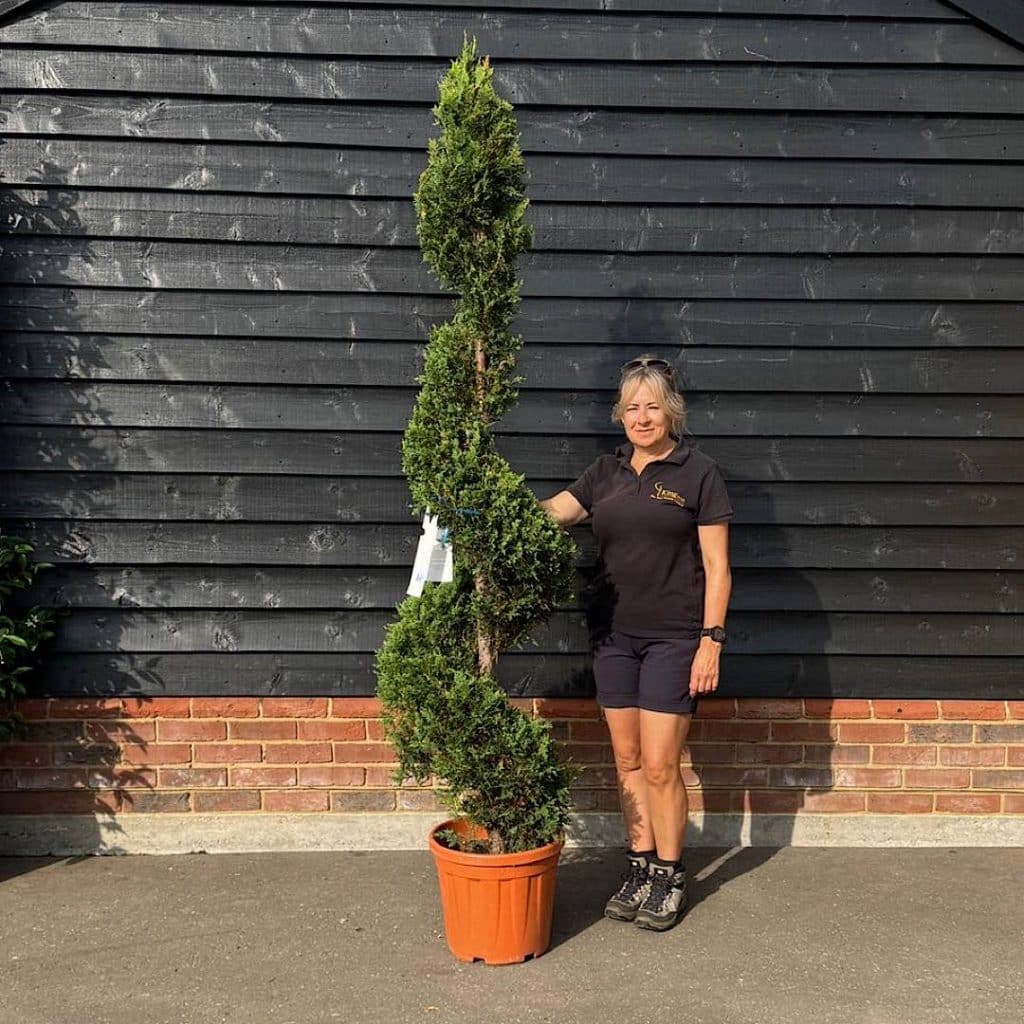

If you’re looking to add height and structure, Italian cypress is another great option. Tall and narrow, these trees work well along pathways, as natural borders, or to subtly draw the eye upward near patios and terraces. They’re especially well-suited to formal or Mediterranean-style gardens.

‘Bravo’ adds year-round interest with its bold, variegated foliage. These leaves, with their creamy-yellow edged leaves, also bring brightness and structure to landscapes. They are a great choice for garden borders, foundation plantings, or containers. Tough and adaptable, ‘Bravo’ has a dense, bushy form and responds well to trimming.
‘Benkomasaki’ is a slender, upright evergreen with a narrow, columnar shape and tidy appearance. With its small, deep green leaves and naturally vertical habit, it brings strong architectural lines to gardens year-round. Ideal for tight spaces, formal hedging, or container planting, ‘Benkomasaki’ offers structure without overwhelming surrounding plants.
‘Jean Hugues’ is an evergreen plant that brings dependable structure to the garden thanks to its dense, compact and upright growth. Its tough foliage handles trimming well, making it ideal for formal hedges, edges, low borders, or containers. Additionally, it’s often chosen as a substitute for Buxus (Box) since it resists both box blight and caterpillar.
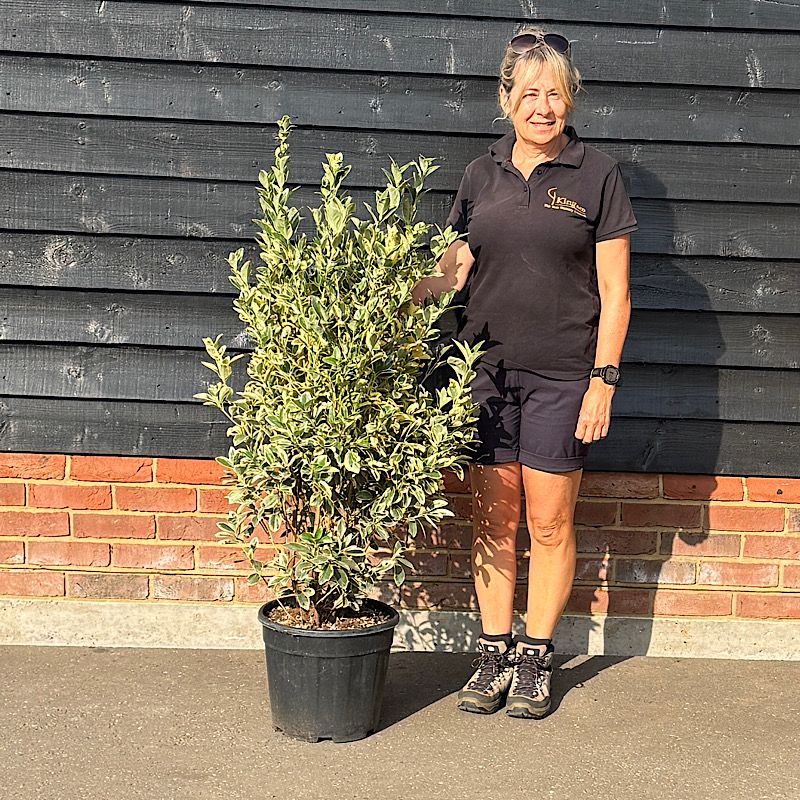

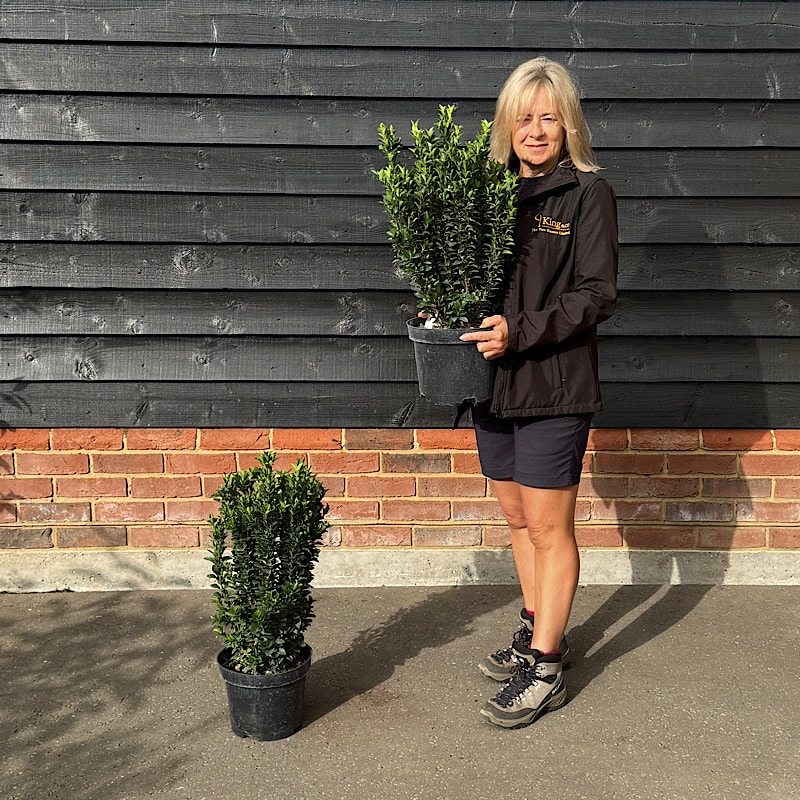
Ilex crenata, is another excellent alternative to box (Buxus), offering a similar look but with a resistance to box blight and box tree caterpillar. These neatly shaped evergreens are a classic choice. Their clean, structured forms bring balance and interest to a space, whether placed in pots or positioned beside doorways, gates, or pathways. They’re also easy to maintain with seasonal trimming.
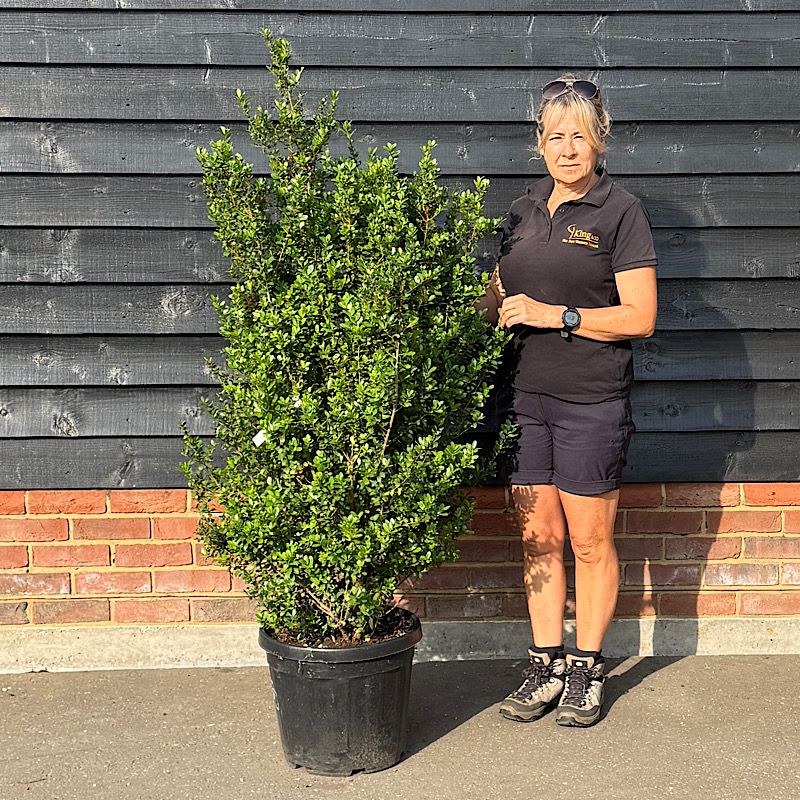
Japanese maples work well in architectural planting schemes because they offer refined structure and striking form. Their elegant branching patterns create strong visual lines. In addition, their graceful silhouettes serve as bold focal points in the garden. As a result, they bring both order and beauty to formal layouts.
These are just a few of our favourite architectural plants to define your border. Check out part two for more suggestions!
Countryside stewardship grants offer vital funding to plant new hedgerows, improve habitats, support biodiversity, and store carbon. These grants include support for planting, restoring, and managing hedgerows. Here’s a breakdown of key options land managers can use.
£17.22 per metre (m) for the total length of boundary hedgerow being gapped-up, not for each side of the boundary.
Purpose. Gapping up hedgerows encourages new growth helping to create a continuous boundary. This creates better habitats and food sources for bees, pollinators, and birds, while supporting carbon storage.
Eligibility. To qualify, you must manage both sides of the boundary. The hedge must be at least 20m long, less than 5m wide at the base, and made up of at least 80% native shrubs. You are not eligible if any gap is over 20m long. For larger gaps, apply under grant BN11.
£22.97 per metre (m) for the total length of boundary hedgerow being gapped-up, not for each side of the boundary.
Purpose. Planting new hedgerows with native species helps to create habitats and provide food sources for bees, pollinators, and birds. It also helps store carbon.
Eligibility. To qualify, you must manage both sides of the boundary. If new planting links existing lengths of hedgerow the gaps must be over 20 metres long. For gaps of 20 metres or less, apply for the BN7 grant.
Plants. Use 2-year-old native transplants that are 450–600mm tall. No single species should exceed 70% of the mix. Plant in two staggered rows, 40cm apart, with at least 6 plants per metre and do not block access points to open land. Keep the area weed-free until plants are established.
Timing, Preparation and Planting. Plant only between 1 November and 31 March (dormant season). Prepare a 1.5m-wide strip with healthy soil and clear all competing vegetation. Install fencing at least 1.2m from the hedge centre or near the bank base to keep out livestock. Replace any failed plants the following season, and remove guards and shelters once the plants are established.
Evidence. Provide photos of the completed planting with your claim. Also keep the following records (available on request):
1. Any consents or permissions connected with the work.
2. Receipted invoices or bank statements where a receipted invoice is unavailable.
3. The date, location and method of any weed control carried out.
4. The dates of planting.
5. Details of age, height and species planted.
6. A photograph of each length of hedge entered into the item before work starts
For full BN7 and BN11 scheme details check the government website.
Both of countryside stewardship grants can be used in conjunction with other incentives like the CHRW1, CHRW2 and CHRW3 actions.
CHRW1: Assess and record hedgerow condition. Involves assessing hedgerows and writing an assessment record so that you can understand the condition of your hedgerows and effectively plan how they can be managed to improve their condition.
CHRW2: Manage hedgerows. Management depends on if the hedge is established or newly planted, but you must follow one of the required management processes. This action was introduced to improve habitats for wildlife and increase pollen, nectar and berries for mammals, birds and insects.
CHRW3: Maintain or establish hedgerow trees. Those who enter this action must make sure that they have an average of at least 1 hedgerow tree per 100m over the total length of hedgerows entered into this action. You can do this by maintaining existing trees growing within the hedgerow or establishing new hedgerow trees. It works to provide a habitat for wildlife as well as carbon storage benefits.
1. King and Co are UKISG assured!
2. Pre-order Bare Root and Root Ball trees and hedging now!
3. King and Co are Plant Healthy
4. Top 10 Native Hedging Plants
5. A Guide to Planting Bare Root Hedging
As the dormant season approaches, it’s the perfect time to start planning your garden or hedgerow. One of the most efficient, affordable, and successful methods of planting during this time is with bare root plants. Whether you’re establishing a native hedge or planting trees, bare root offers many benefits. This complete guide will walk you through everything you need to know.
Bare root plants are grown in fields and lifted when dormant, usually in late autumn through early spring. Unlike container-grown or potted plants, they’re shipped without soil around their roots. This makes them lightweight, easy to handle, and much cheaper to transport. Their affordability and ease of use means that they’re ideal for mass planting too.
Bare root plants are only available during their dormant season, and once they arrive, they must be planted quickly. Since bare root plants are only lifted and shipped while dormant, timing is critical. Pre-ordering ensures you’re ready to plant as soon as the season begins. This gives you the best chance to establish a healthy, thriving hedge or tree line before spring growth kicks in.
Bare root planting isn’t just cost-effective. It’s also proven to be a highly successful method for establishing hedgerows and native plantings. Here’s why many gardeners and landscapers choose bare root:
If you’re planting 40-60 cm or 60-90 cm tall plants in a clear run, aim for five plants per metre in a double staggered row. This spacing helps create a dense native hedge quickly and effectively. A small failure rate of around 5% is normal. So, when planning, always order a few extra plants to account for possible losses.
Using accessories to support your bare root plants helps to give them the best start while significantly boosting survival and establishment rates.
Guards and canes protect young plants from rabbits and deer while encouraging straight growth.
Irrigation solutions, like leaky pipes, help keep soil consistently moist without overwatering.
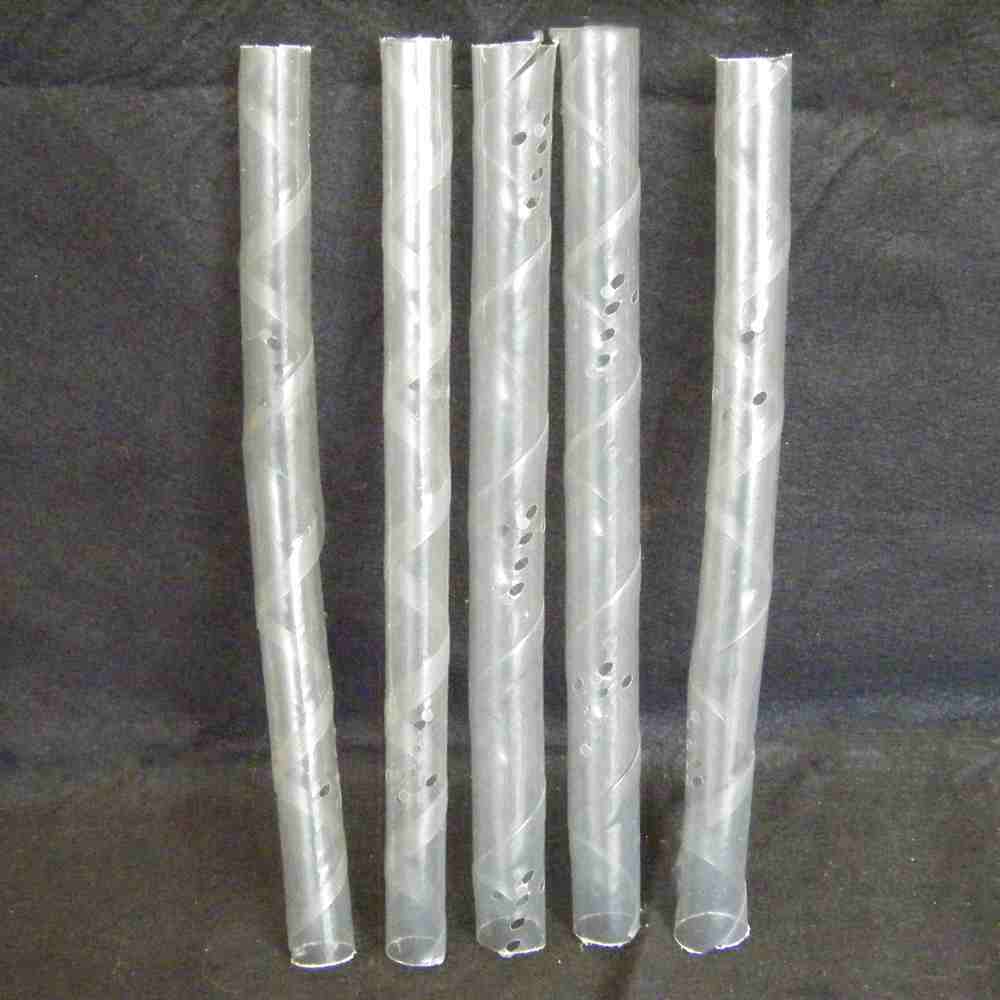
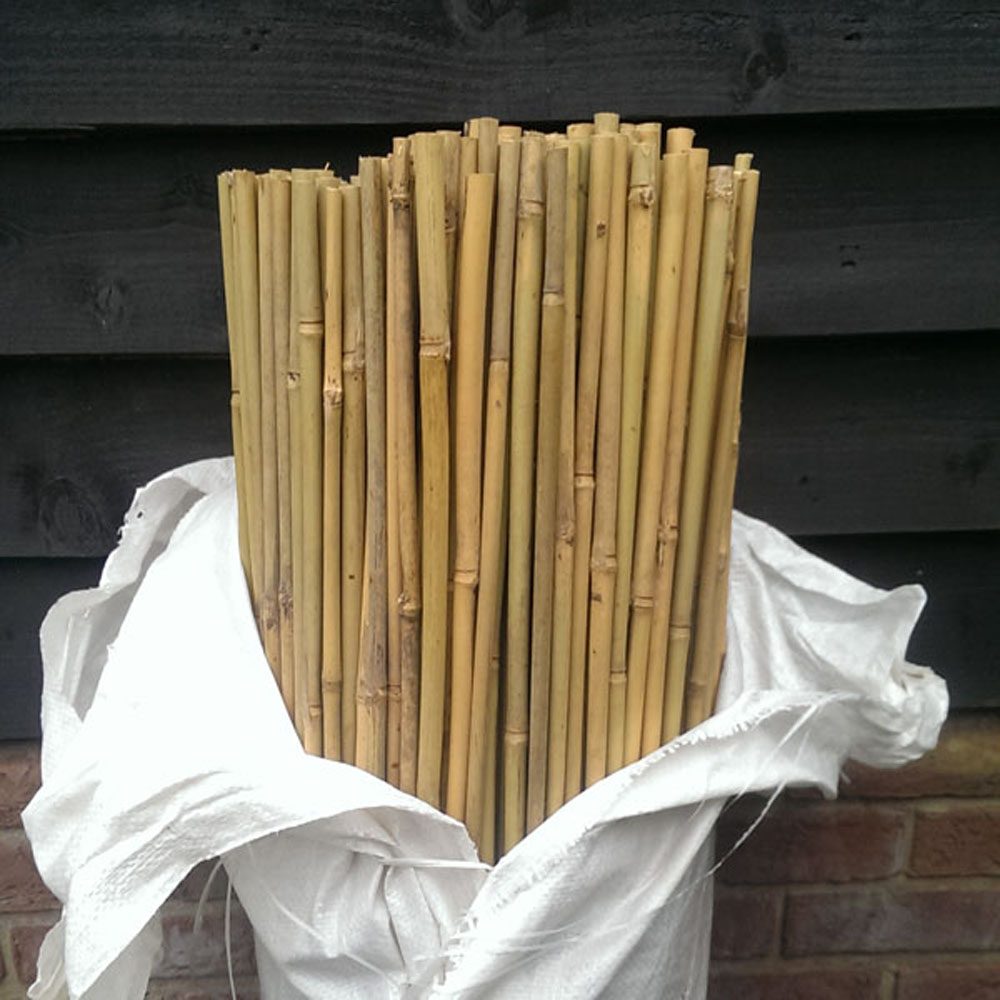
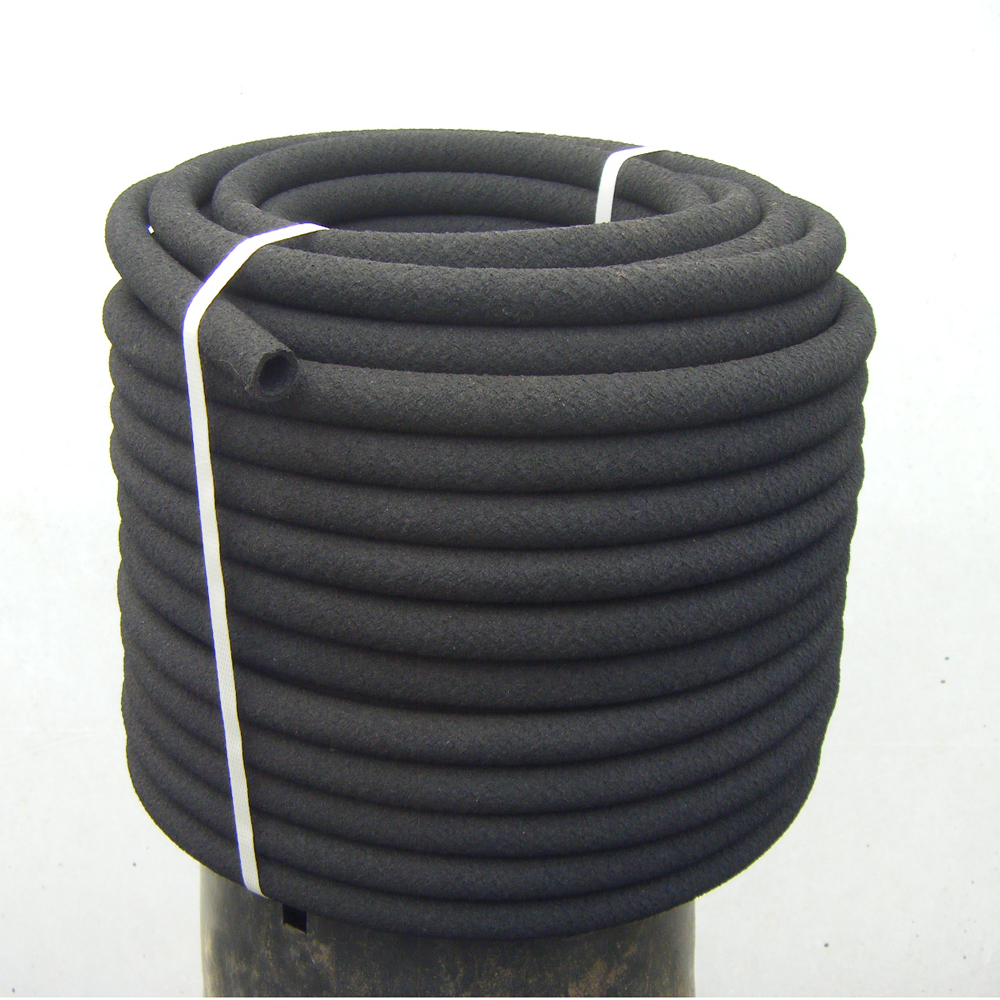
When planting smaller bare root plants we recommend that you follow the ‘notch planting’ technique as it is a quick process that avoids digging huge planting pits that require laborious backfilling. When ‘notch planting’ you should…
1. Make sure that the roots are moist.
2. Open up a slit in the soil, push a spade few inches deep and move back and forward.
3. Slide the root of your bareroot plant into the slit, up to the nursery soil mark.
4. ‘Heel in’ tight to ensure good soil/root contact, you should have to tug the plant quite hard to remove it.
Don’t remove the hedging plants from the box or bag before you plant. Exposure to sun or drying winds may lead to root desiccation and eventual failure.
Dig the tree pit. Make sure it’s wide and deep enough to accommodate the roots without bending them.
Prepare the soil. Mix soil from the pit with a soil improver or compost. A 50:50 mix boosts drainage and nutrients.
Insert the stake. Drive a sturdy stake into the ground where the tree will be planted, offering support from day one.
Plant the tree and backfill. Place the roots in the hole and fill it back in with your soil mix.
Firm the soil. Press the soil gently but firmly around the roots to eliminate air pockets and stabilize the tree.
Attach the tie. Use a buckle tie to secure the tree to the stake. This prevents wind damage and encourages straight growth.
Mulch around the base. Add a layer of mulch to retain moisture and prevent weeds from stealing nutrients.
Water well. Give your newly planted tree a thorough soak to settle the soil and kick-start root growth.
At King & Co, we stock a wide range of Crab Apple varieties from the white-flowering ‘Street Parade’ to the rose-pink ‘Rudolph’. In this guide to Crab apple trees, we highlight the key benefits of planting Crab Apple trees and showcase some of our favourite varieties for your garden!
Crab Apple trees offer exceptional seasonal interest and stand out in any garden or landscape! Here is how they transform gardens throughout the year:
Spring. At this time of year, Crab Apple trees burst into bloom. Their branches fill with masses of flowers in shades like white, pink or red. These blossoms attract bees, butterflies and other pollinators, helping to support local wildlife!
Summer. Once their foliage has appeared, Crab apples can create shade, natural screening/privacy and structure to outdoor spaces.
Autumn. Many varieties produce clusters of ornamental berries that last well into winter. These fruits add bold colour and attract birds and wildlife. Crab apple leaves also turn to seasonal shades of gold, orange and red before they drop. These colours help to warm up gardens in the colder months.
‘Rudolph’ is a small, upright tree that rounds with age. It has copper-red leaves that turn green in summer and yellow in autumn. It also has rose-pink flowers that bloom in late spring, followed by yellow-red crab apples. Renowned for its resistance to scab, this tree reaches a mature height of 5-7m. It suits gardens, borders, parks, and woodland.
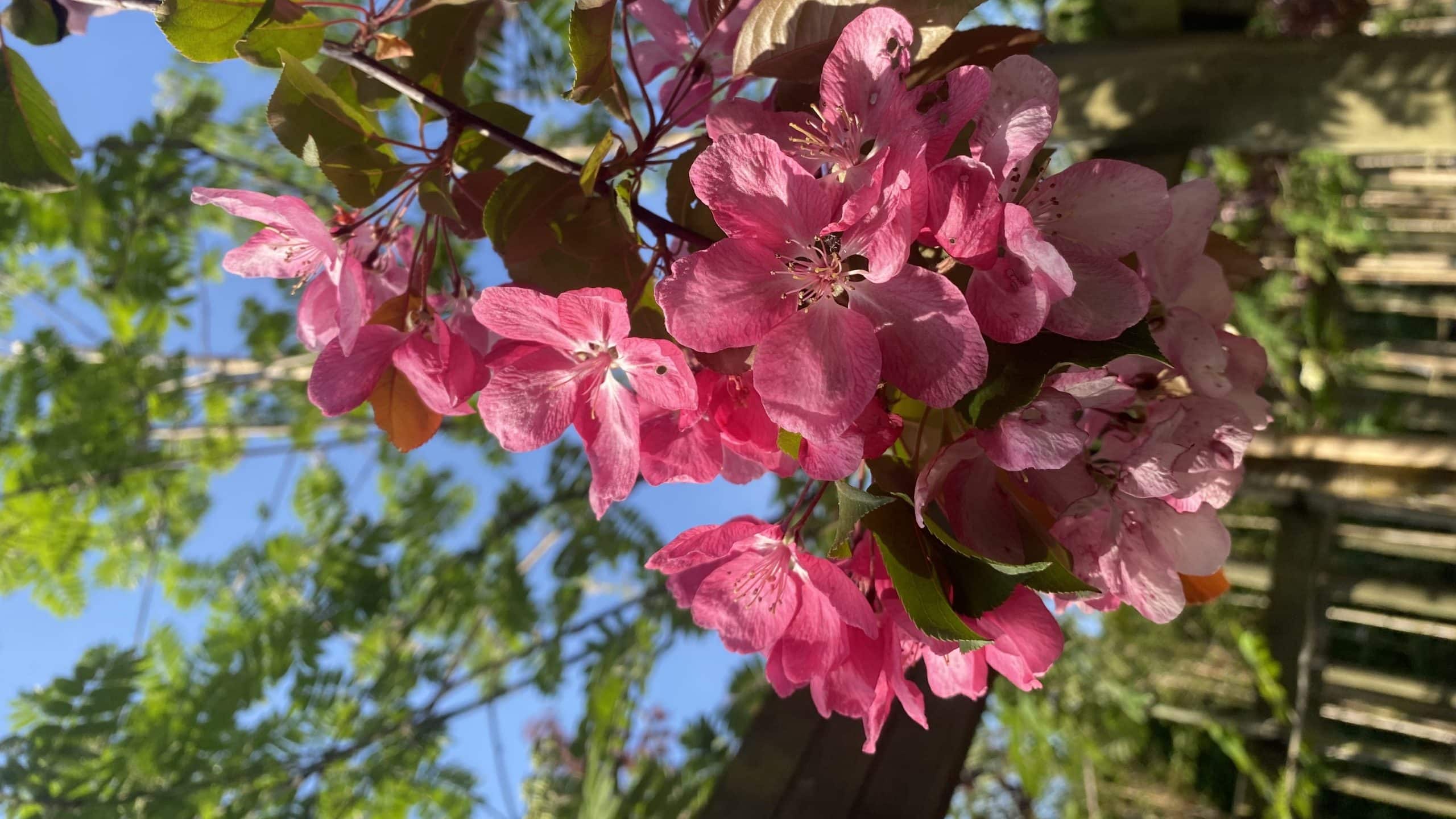
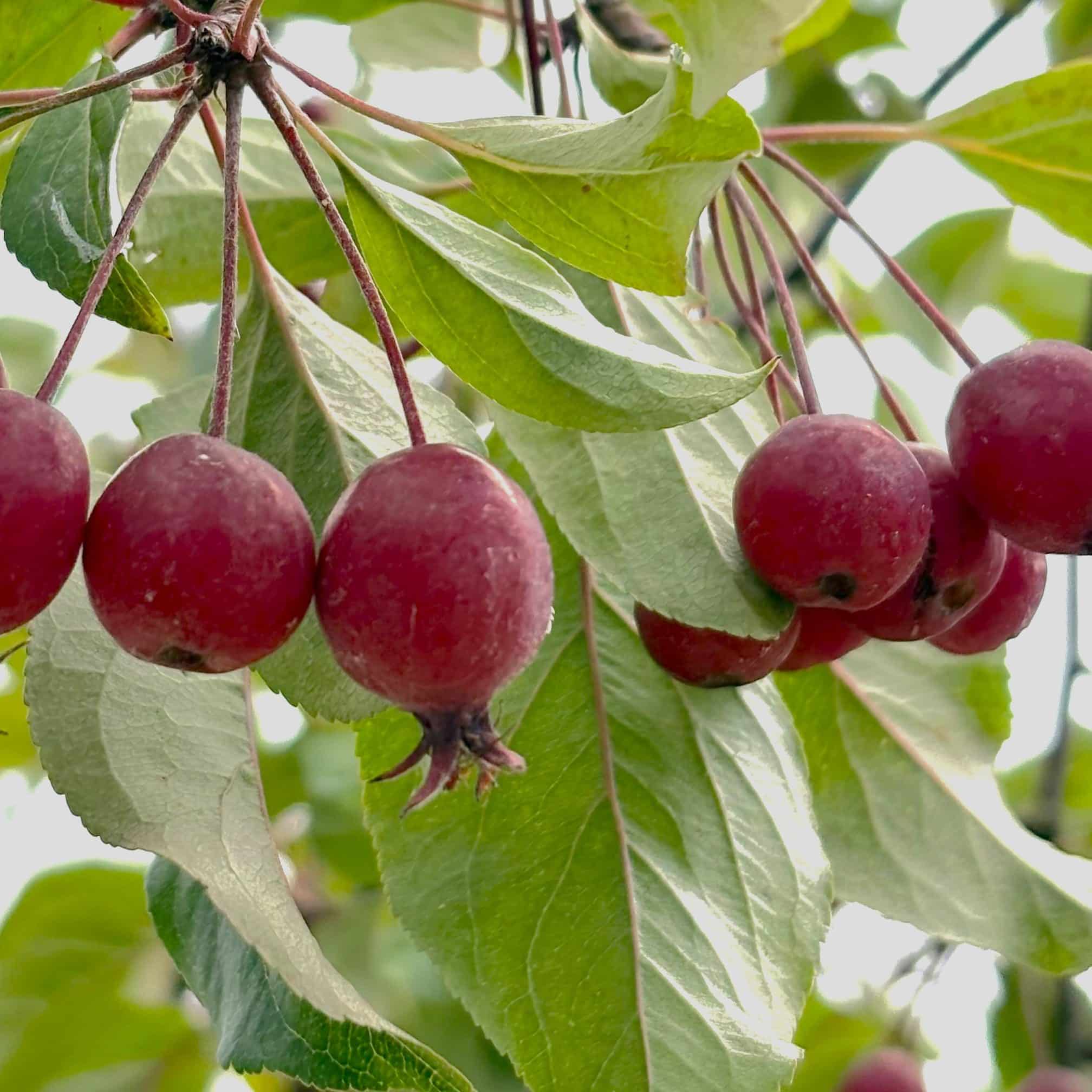
Malus ‘Street Parade’ has dark green leaves that turn yellow in autumn. It also bears masses of white flowers in spring and glossy purple-red fruits in late summer. These fruits persist into autumn. This compact tree has an upright habit that matures into a graceful oval shape. It’s an excellent choice for structure, seasonal colour and year-round appeal.

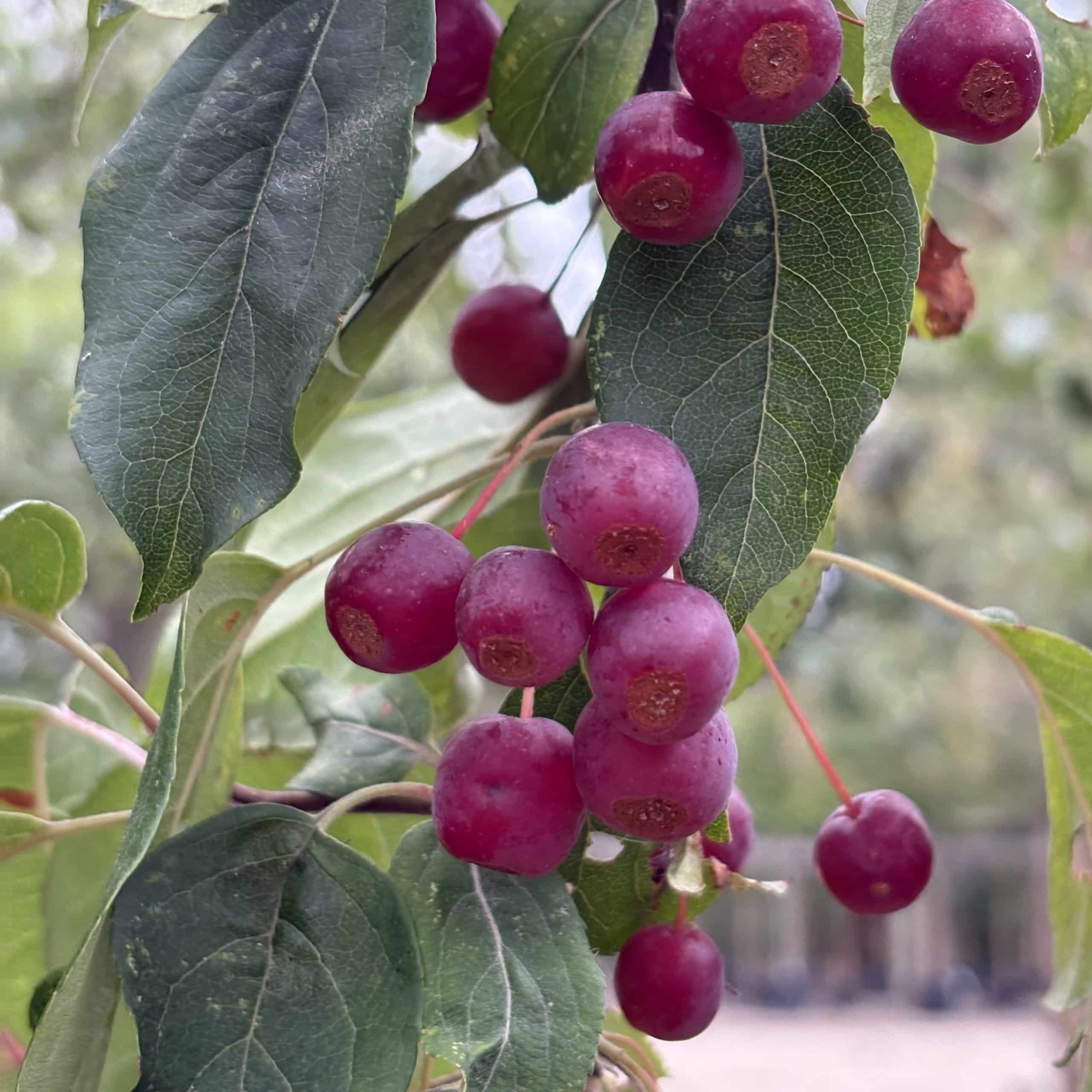
‘Red Sentinel’ features bronze-tinted buds that unfold into oval, dark green leaves. In spring, it produces striking single white blossoms, while autumn brings clusters of glossy, cherry-like fruits. These fruits are vivid red and gradually deepen to a rich, dark crimson. Unlike many other trees, ‘Red Sentinel’ retains its fruit throughout winter, bringing vibrant colour to even the coldest months.
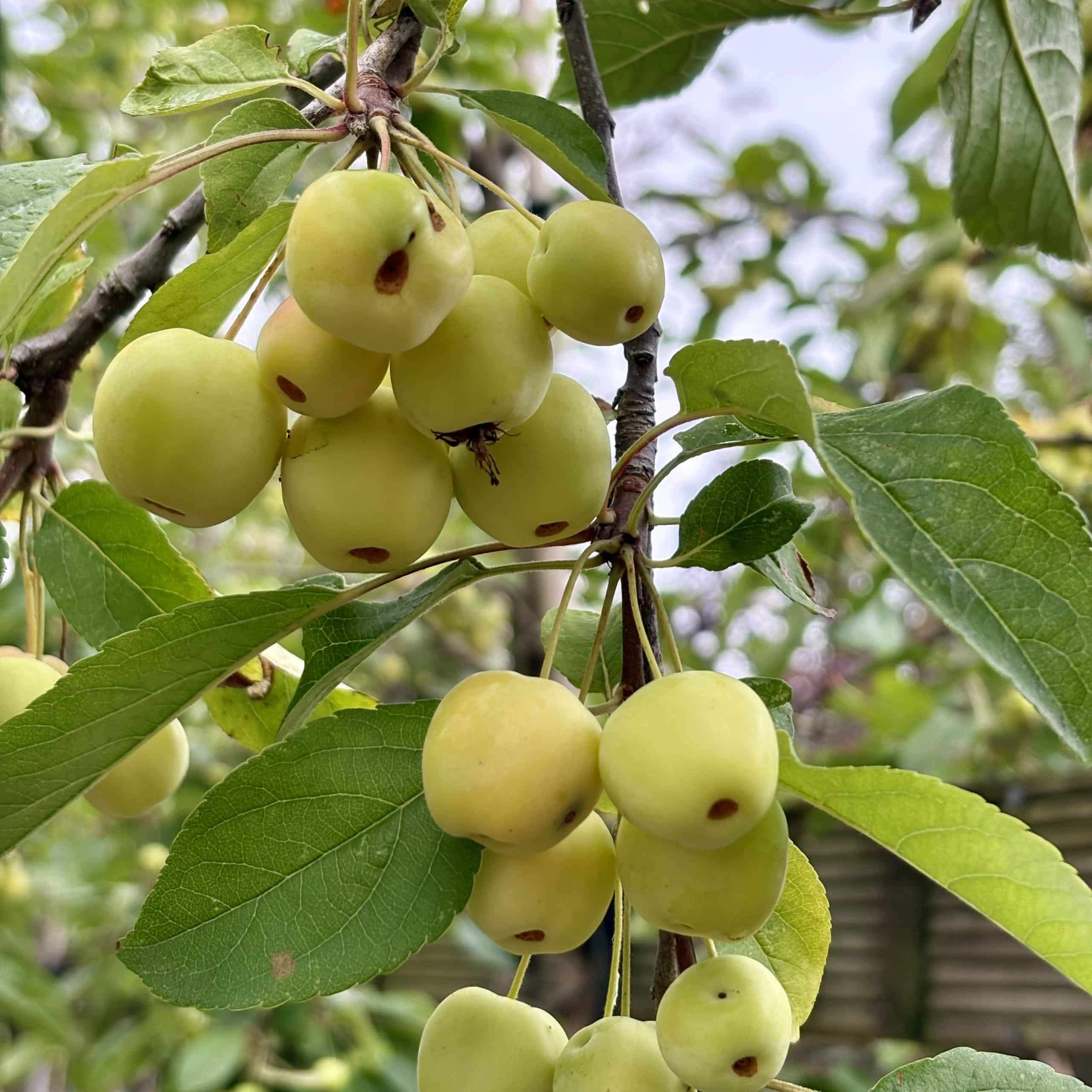
‘Butterball’ is a small crab apple tree with a rounded, weeping shape. Its green leaves start off greyish and turn yellow and orange in autumn. In late spring, pink buds open into lots of pale pink or white flowers. Small yellow-orange crabs then appear in autumn. The tree can grow 4–6 meters tall but often stays smaller because of its weeping shape. In years with lots of fruit, the branches bend even more.
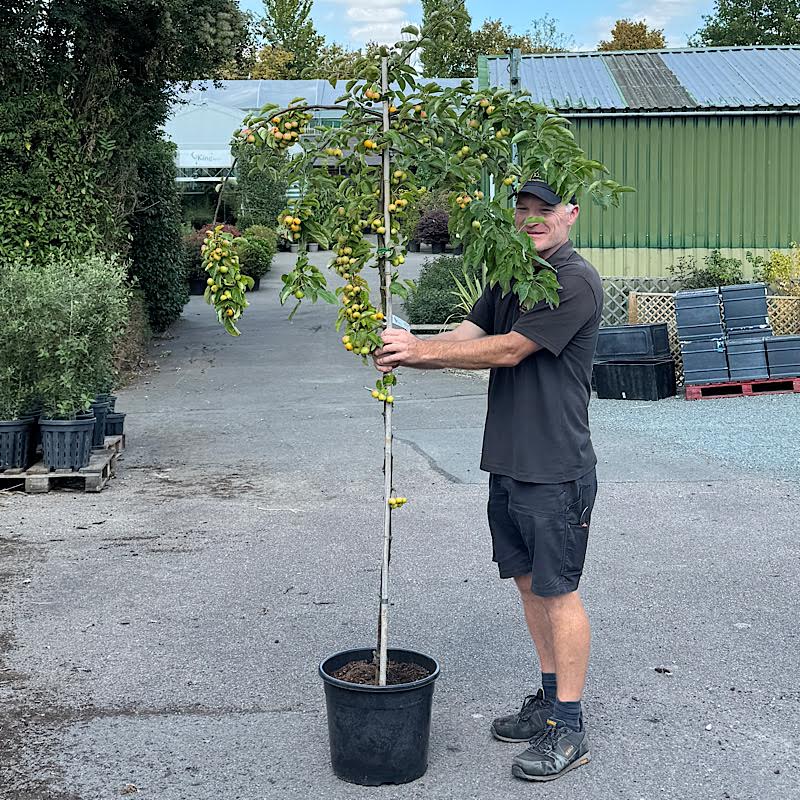
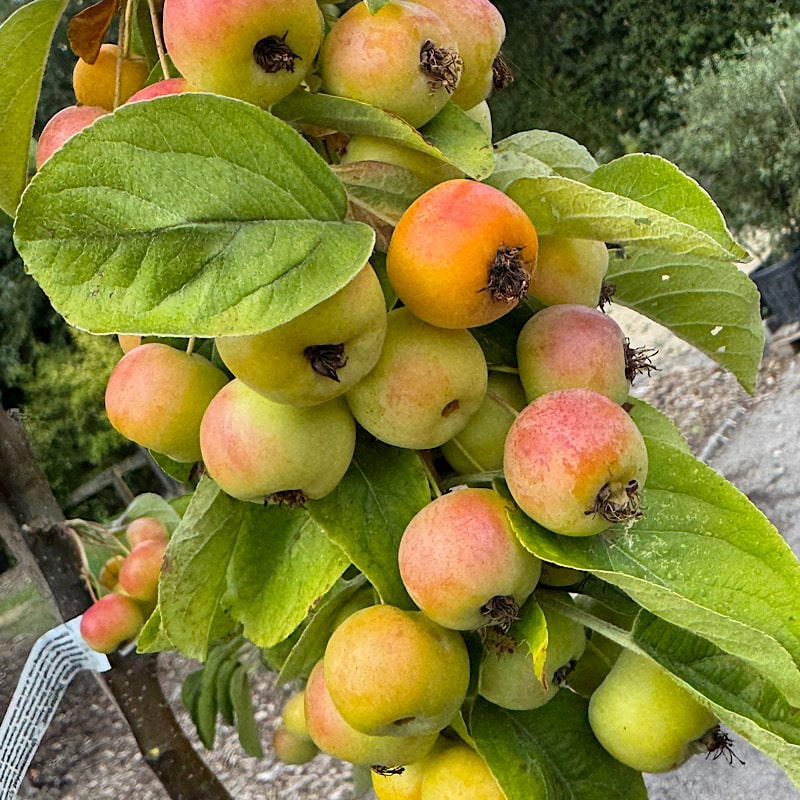
Planting rowan trees is a smart way to add vibrant colour to your autumn garden. These trees light up the landscape with fiery reds, oranges and golds. Their berries also attract birds, adding life and movement to gardens. If you start planning early, you’ll enjoy a stunning display by the time leaves begin to fall. In this article, we’ll explore the best varieties for autumn colour, how to plant them, and tips for long-term care!
‘Joseph Rock’ has pinnate green leaves that shift to red, orange, and purple in autumn. In spring, it produces flat clusters of creamy-white flowers. By autumn, bright yellow berries appear. An excellent choice for year-round appeal, this Sorbus works well in small gardens or tight spaces.
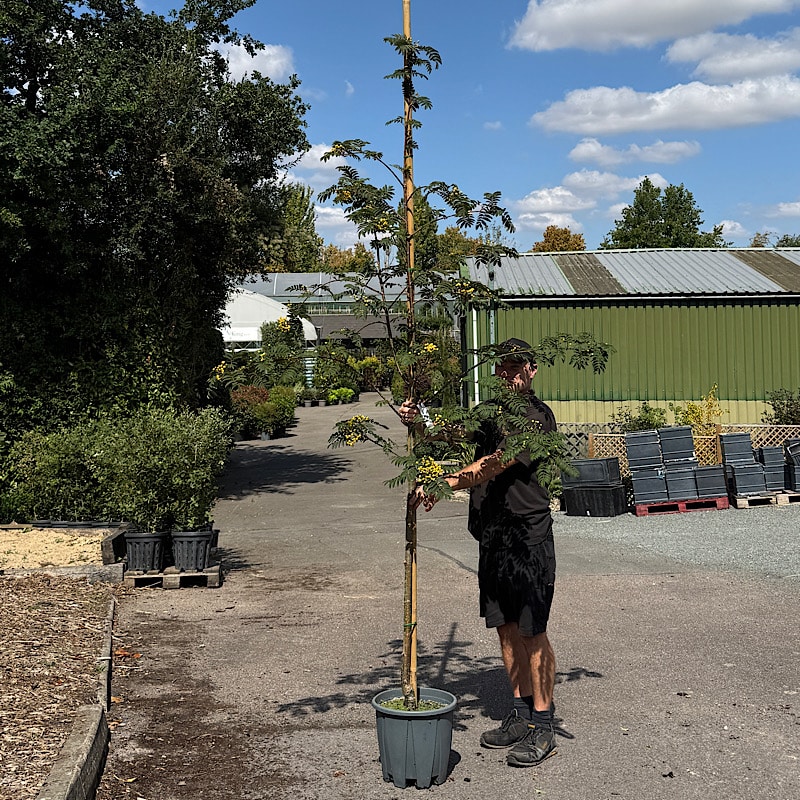
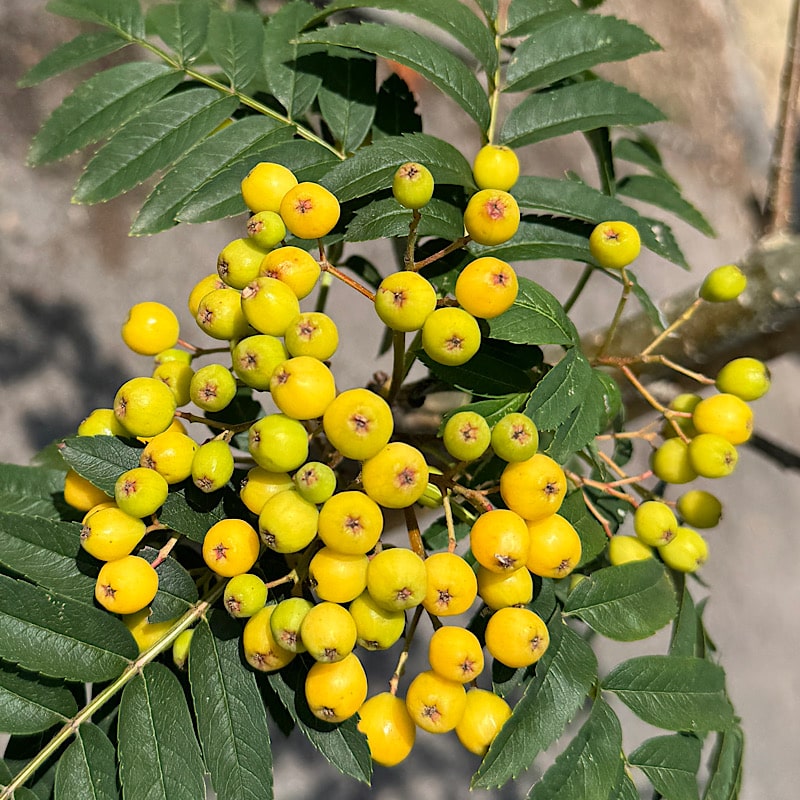
Sorbus hupehensis has dark green, pinnate leaves that turn bright orange and red in autumn. In spring, it produces clusters of white flowers. Later in the season, red or orange berries appear. This rowan has an upright shape that becomes oval over time.
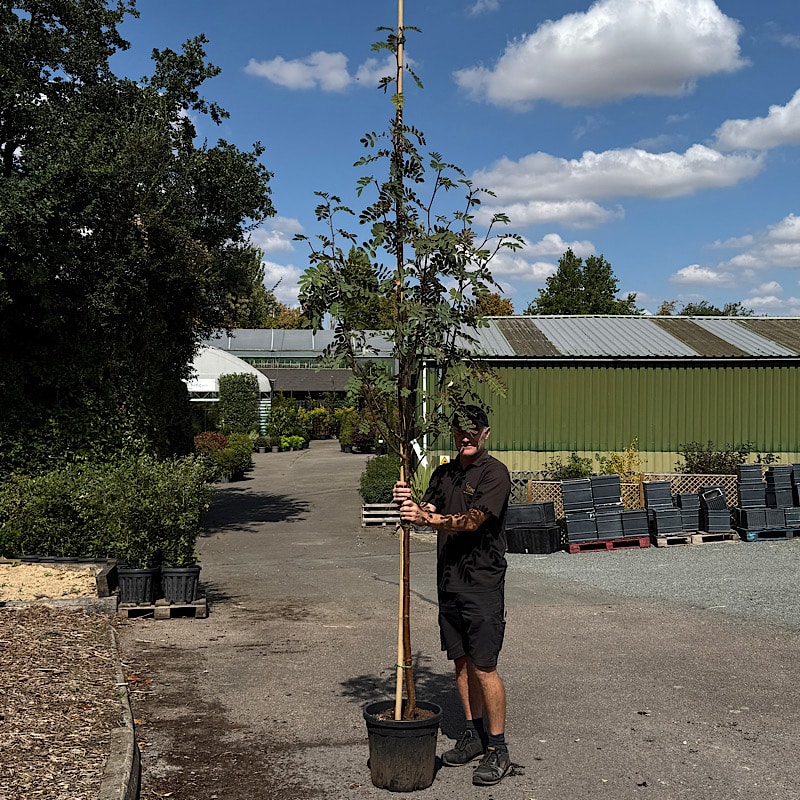
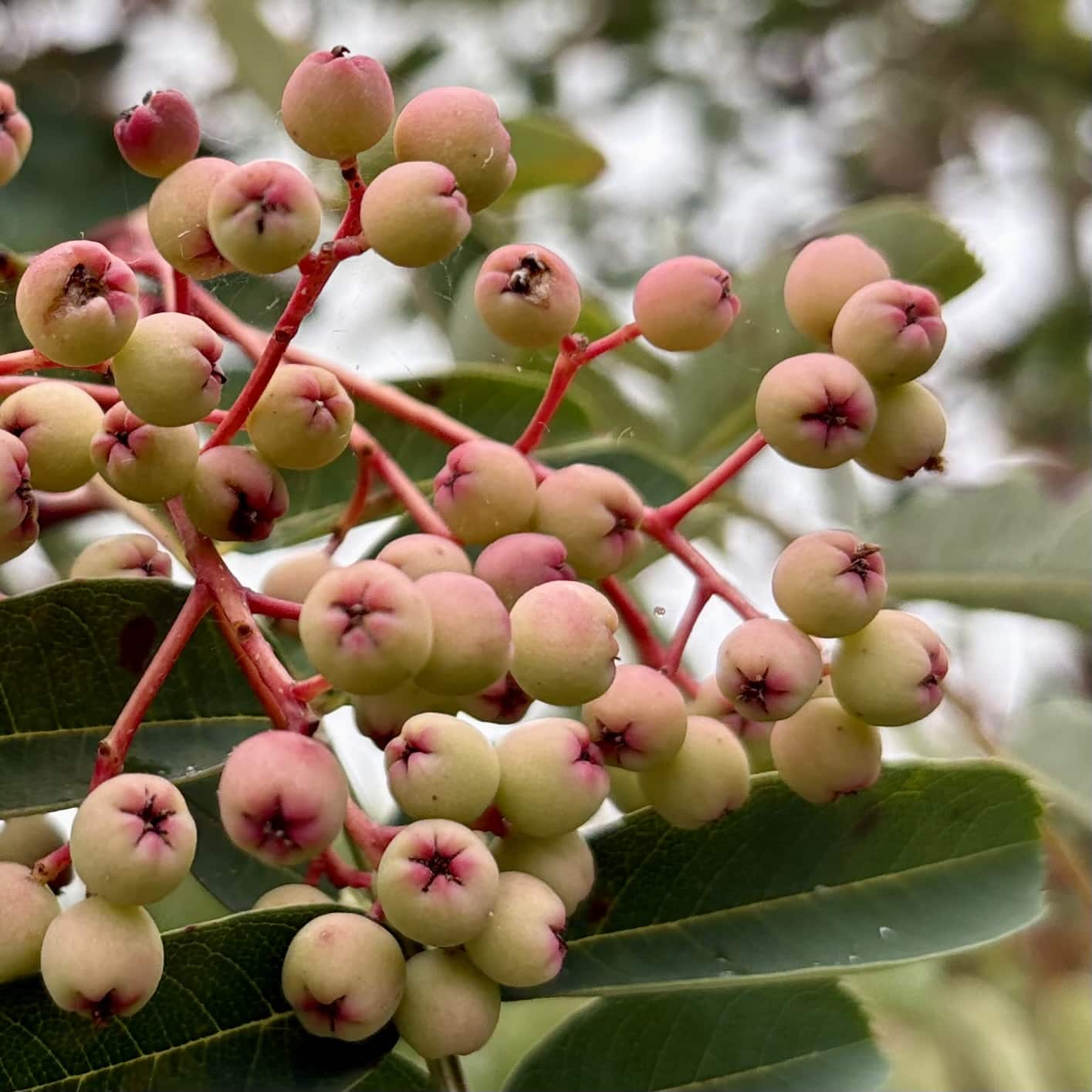
Vilmorin’s rowan has a striking appearance, with dark green leaves that turn orange, red, and purple in autumn. In spring, it also produces clusters of white flowers. By autumn, small red berries then appear. This rowan grows up to 5 metres tall. Its compact size make it a great choice for small gardens.
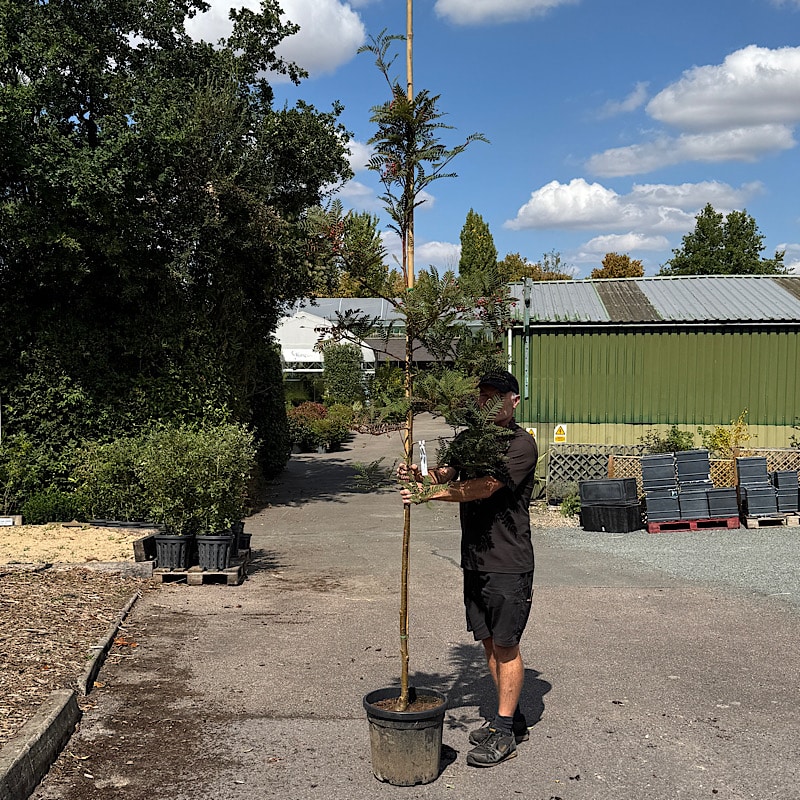
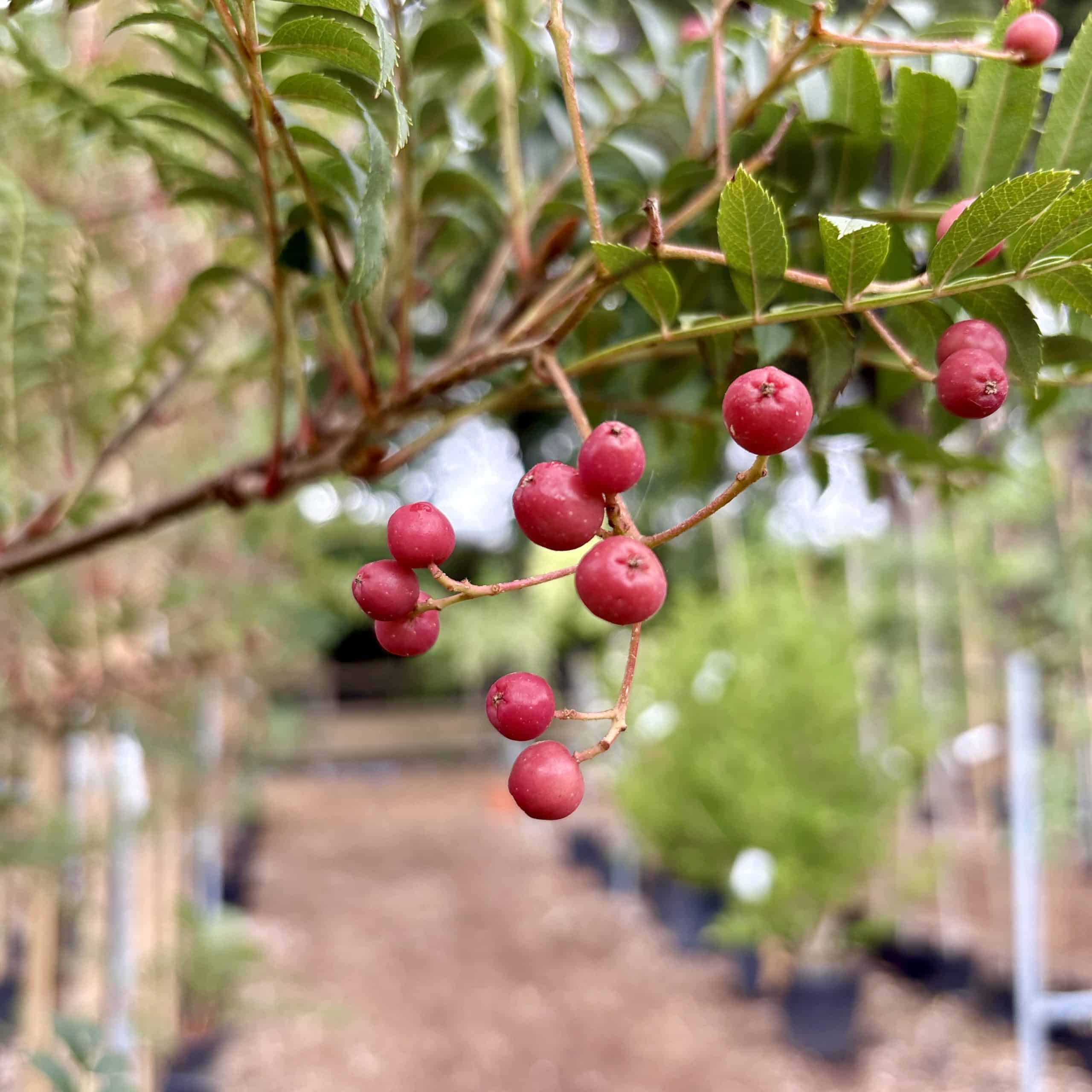
The Kirsten’s Pink rowan has green pinnate leaves with a grey-green underside, this foliage turns bright red in autumn. In spring, it also produces clusters of white flowers with a pink tint, followed by deep pink berries in autumn.This Rowan has a rounded to spreading shape, forming a crown up to 3 metres wide. Its seasonal interest makes it a standout ornamental tree.
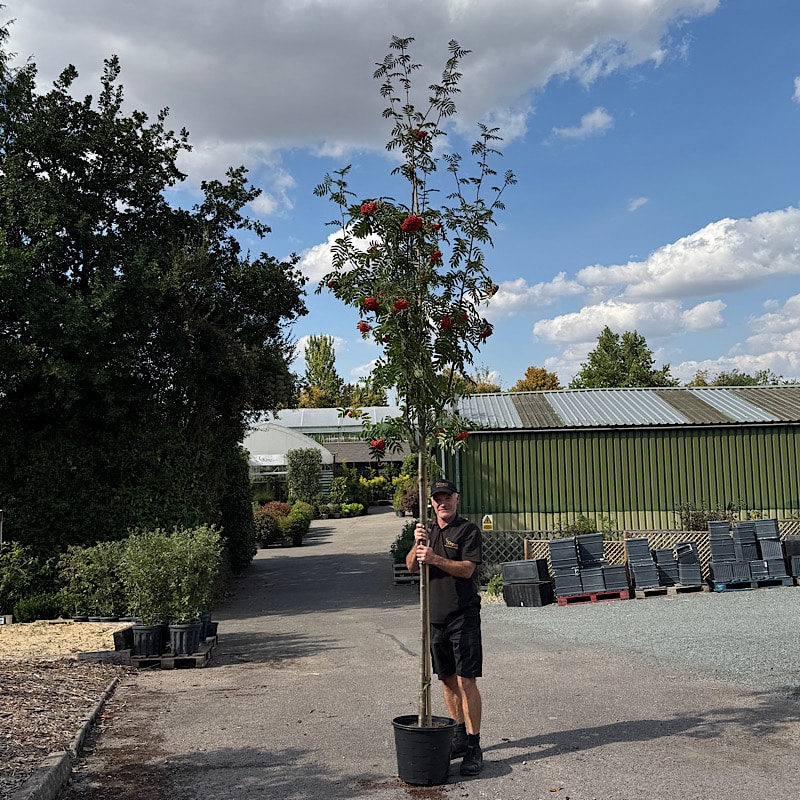
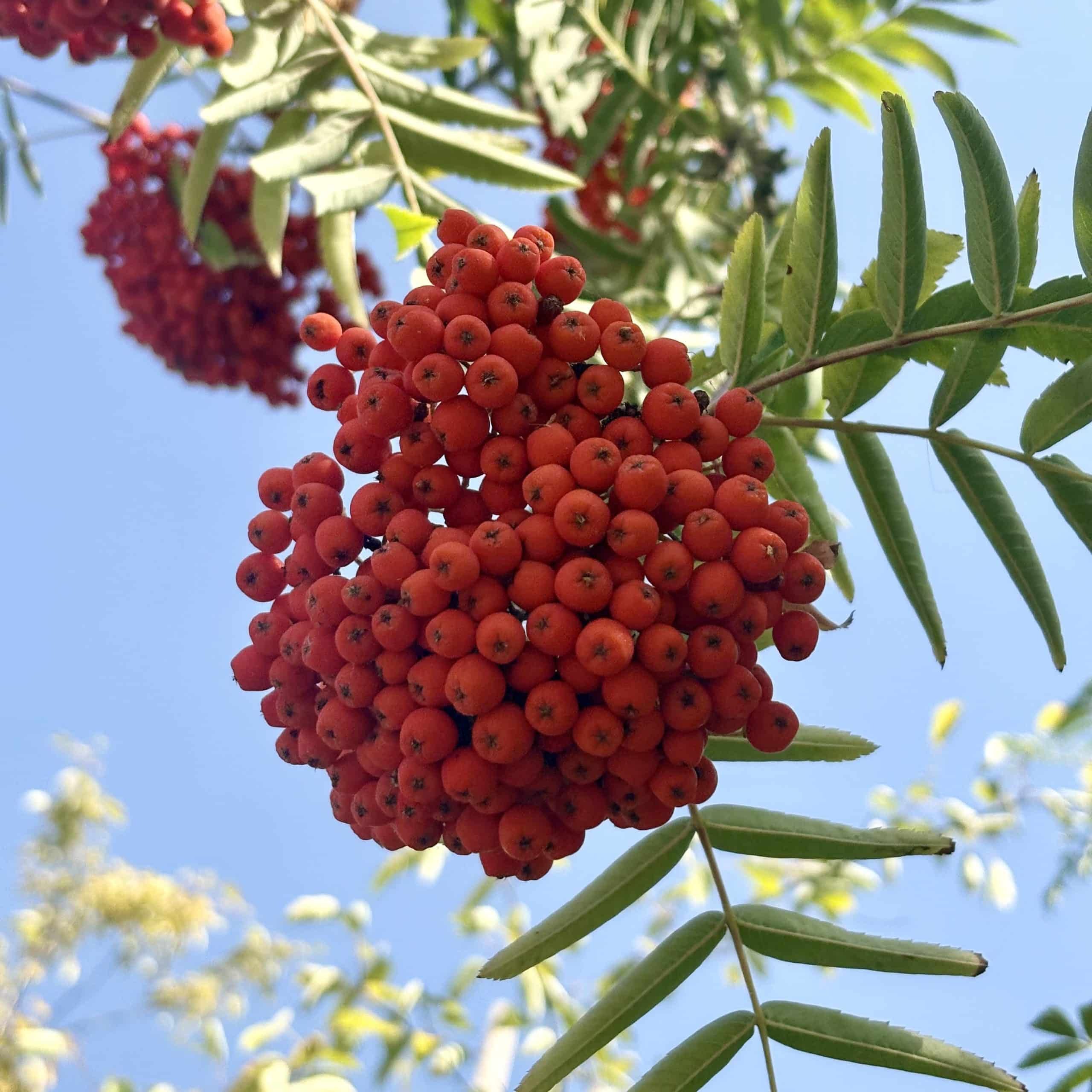
‘Cardinal Royal’ has green foliage that turns fiery shades of orange and red in autumn. It also produces clusters of white flowers and bright red berries in autumn. An excellent choice for adding bold colour to landscapes, this rowan has a compact form that makes it ideal for small gardens.
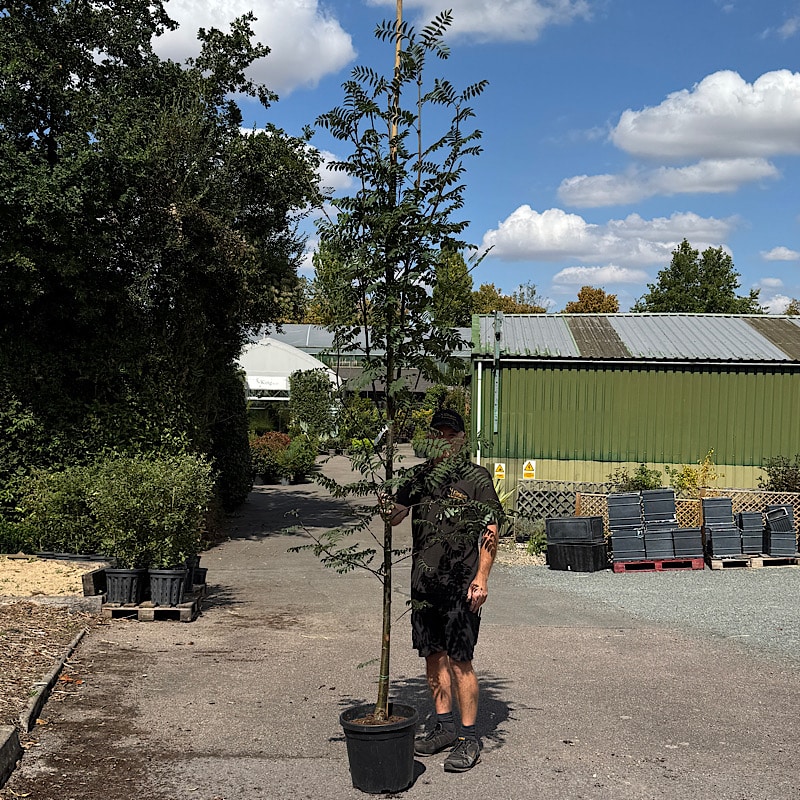
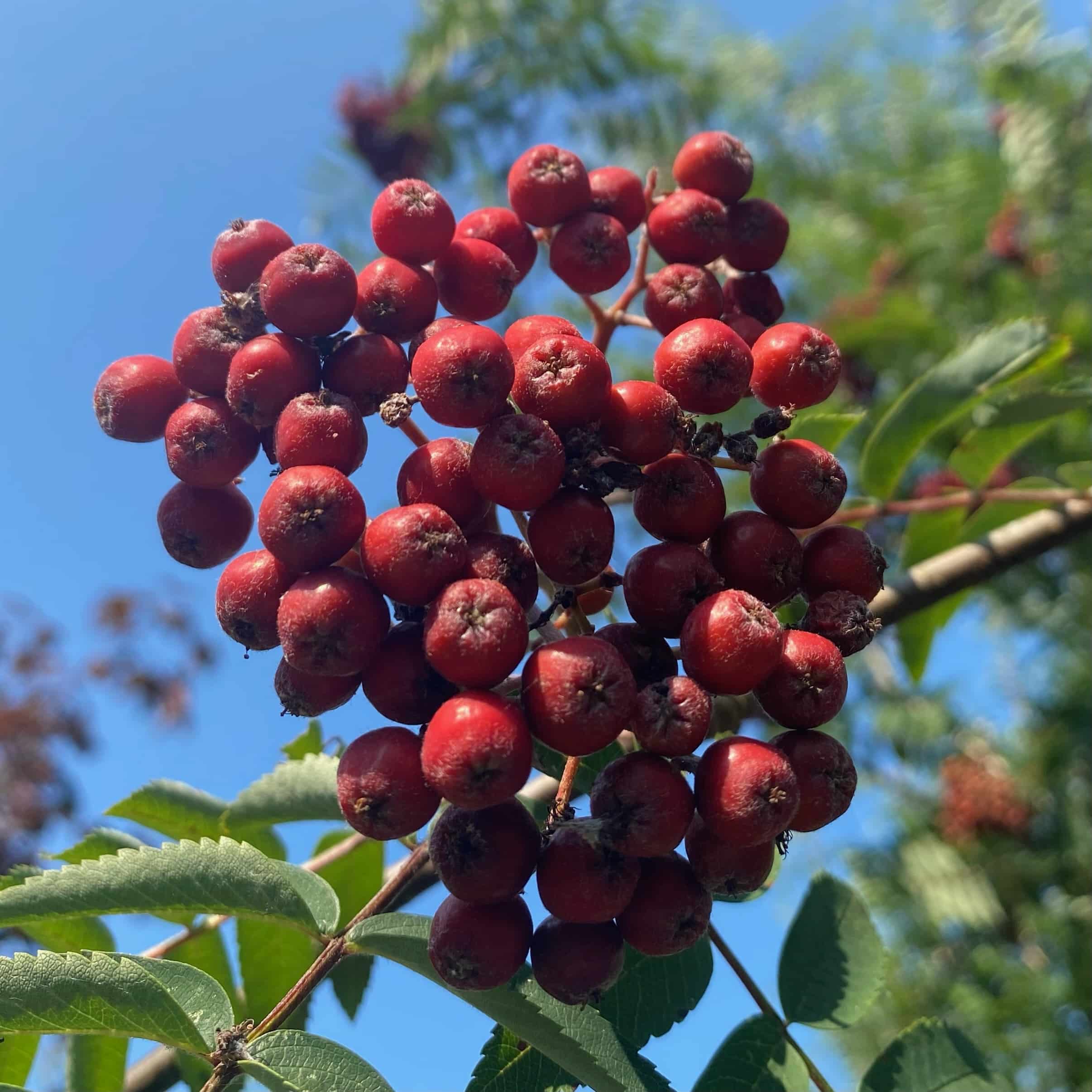
Sorbus aucuparia is a fast-growing, medium-sized deciduous tree. It starts with an upright shape, but becomes open and rounded over time. In spring, it produces clusters of white flowers. By autumn, bright red berries appear. Reaching a mature height of 10m, it’s a versatile choice that adds strong ornamental value to gardens and landscapes.
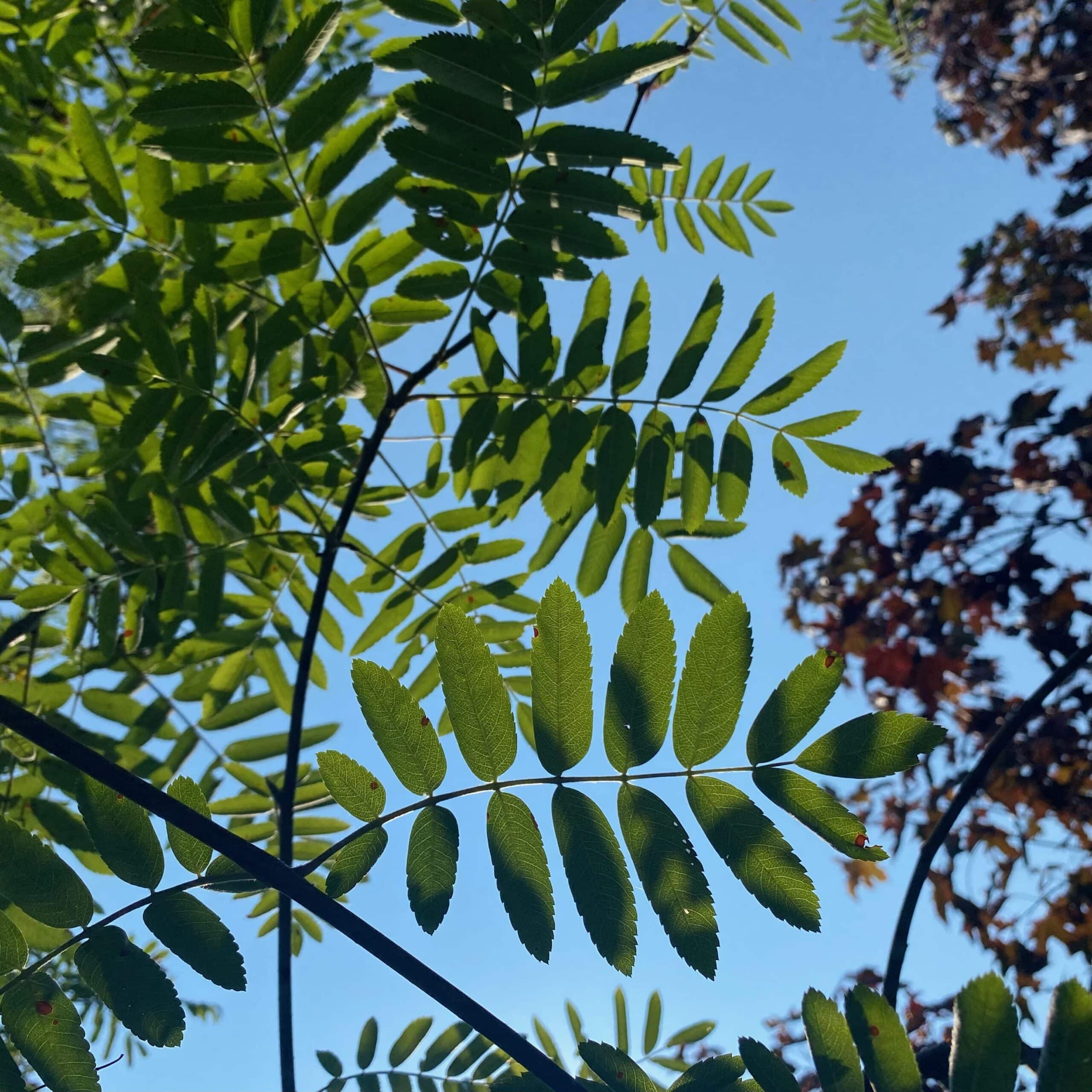
Looking for something different from a rowan? Robinias make a great alternative!
Robinia pseudoacacia ‘Semperflorens’ is a medium-sized deciduous tree with a narrow, oval crown that becomes broader and more open with age. It grows to a mature height of 10 to 15 metres, making it well suited for medium to large gardens, parks, or urban areas.
This Robinia has dark green pinnate leaves with a similar texture to rowan. It also has white, pea-like flowers in summer and flat brown seed pods appear in autumn. These give the tree a unique look and add seasonal interest.
Robinia pseudoacacia ‘Frisia’ has an upright shape when young. As it matures, its thorny branches spread outward to form a wide, oval crown. ‘Frisia’ stands out for its rich, golden-yellow pinnate leaves. In summer, it produces hanging clusters of white, pea-like flowers. By autumn, flat brown seed pods appear, adding texture and seasonal interest. Its striking foliage and seed pods make it a strong alternative for autumn colour and structure.
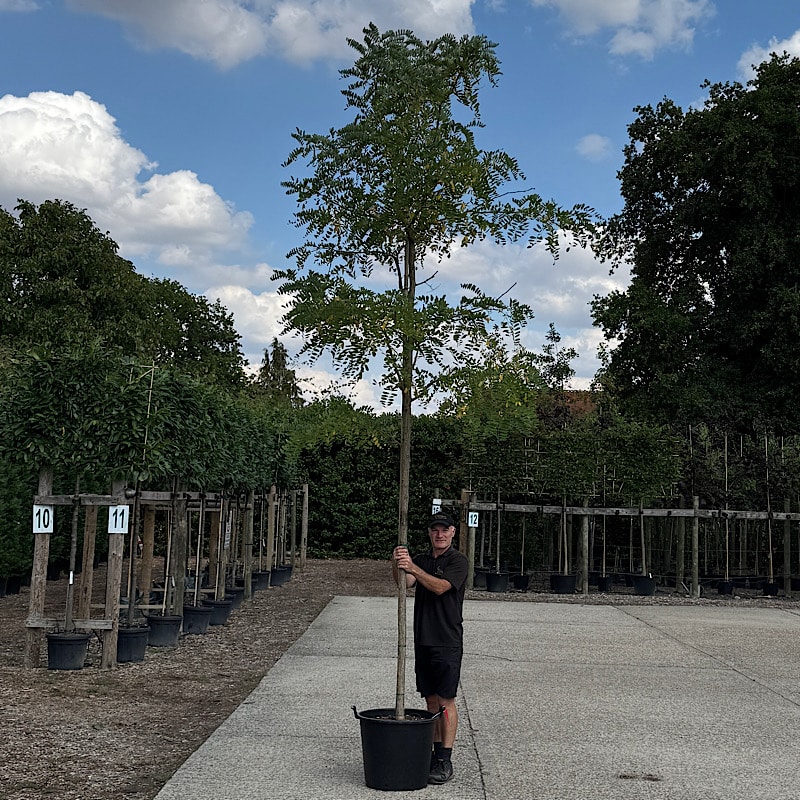

Evergreens offer an excellent way to create natural privacy and define garden spaces. At King & Co, you’ll find a wide selection from bushy shrubs and espaliers to standard and pleached trees. These versatile plants are ideal for softening fence lines, screening unwanted views, and marking out borders. By choosing evergreen varieties, you’ll also enjoy lasting structure, greenery, and privacy throughout the year. Here, we’ve highlighted our top picks for the best evergreen plants for hedging and screening.
Evergreen bushes and espaliers are excellent for softening fence lines, creating natural borders and adding year-round structure to gardens.
Espaliers are shrubs trained to grow flat along a frame, creating a controlled, two-dimensional shape. As a result, they’re ideal for small gardens or narrow spaces where untrained shrubs might be too large. Since their growth has already been shaped, espaliers come with a defined height and form, offering instant visual appeal. They also bring a clean, formal look to the garden, perfect for those who prefer a structured or architectural style.
Photinia Red Robin: Stunning red new growth on a neatly trained frame, ideal for walls, patios, or boundary lines.
Photinia ‘Pink Marble‘: A variegated twist on the classic, adding a green tint and pink margin for extra visual interest.
Jasmine: Loved for its fragrance and informal charm, perfect for softening vertical spaces.

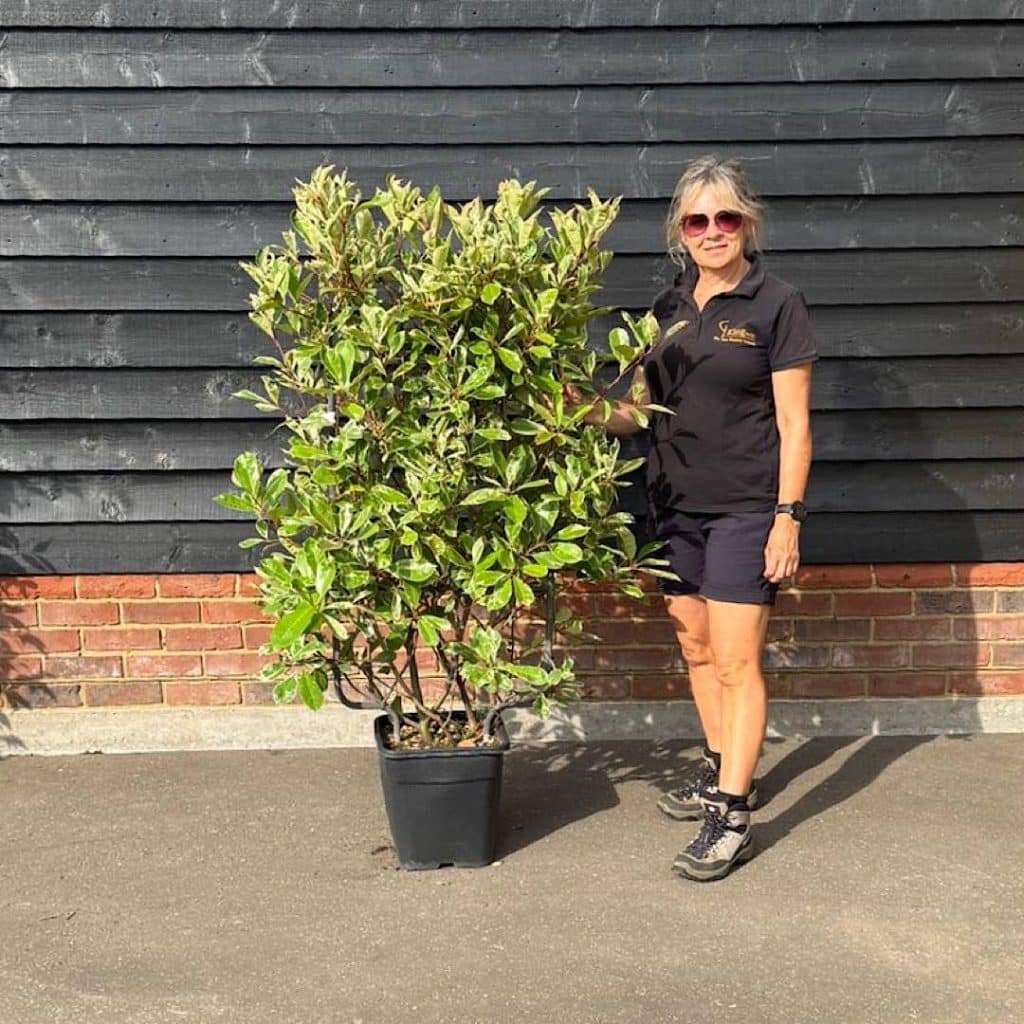
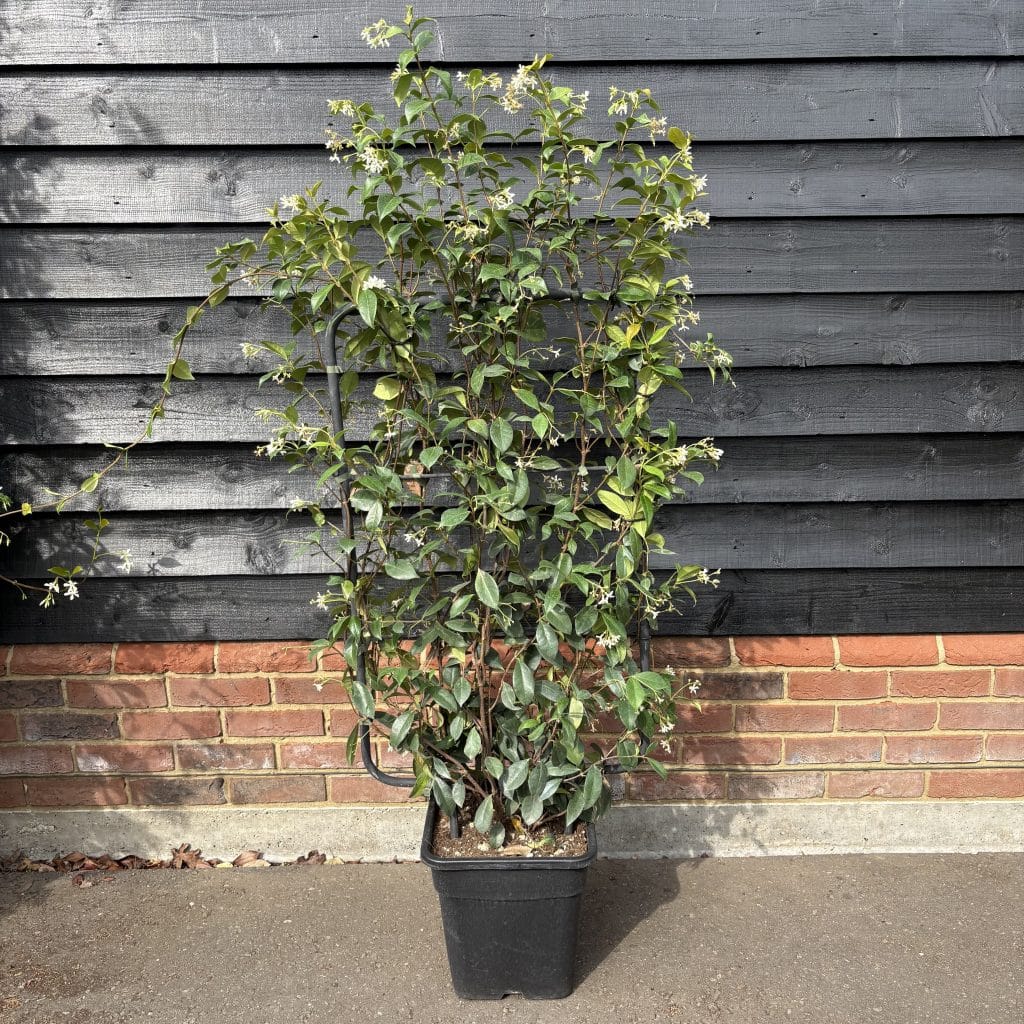
Bushy hedging plants grow naturally without being trained flat, developing a thick, three-dimensional screen. As a result, they provide a softer, more natural look. However, if you prefer a tidier appearance, you can easily clip them into a more formal shape.
Photinia: A vibrant, evergreen best known for its striking red new growth, which matures to a glossy dark green. Ideal for adding colour and structure to gardens, it’s fast-growing and easy to maintain.
Cherry laurel: A fast-growing evergreen with large, glossy green leaves that provide year-round privacy and noise reduction.
Portuguese laurel: An elegant evergreen with a dense, upright growth habit. It has smaller, darker green leaves than cherry laurel and reddish-purple stems that add visual interest. It is slower-growing than cherry laurel but more refined in appearance.
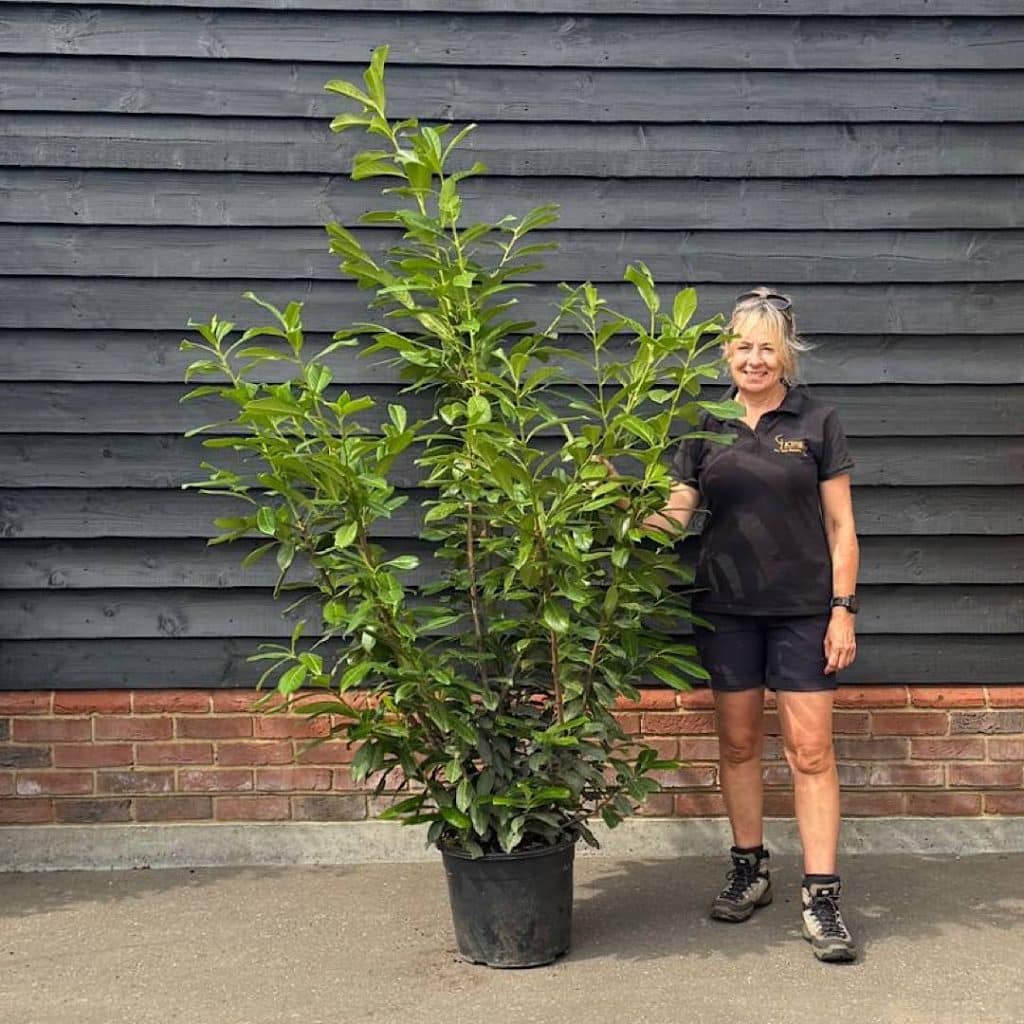


Euonymus ‘Jean Hugues’: This evergreen has dense, compact, and upright growth. Its tough foliage handles trimming well, making it ideal for formal hedges, edges, low borders, or containers. It’s often chosen as a substitute for Buxus (Box) since it resists both box blight and caterpillar.
We also offer standard forms of Photinia, Cherry laurel, and Portuguese laurel. Each features a clear stem around 1.8 m tall with a dense, bushy head (ideal for screening above fences and blocking unwanted views).
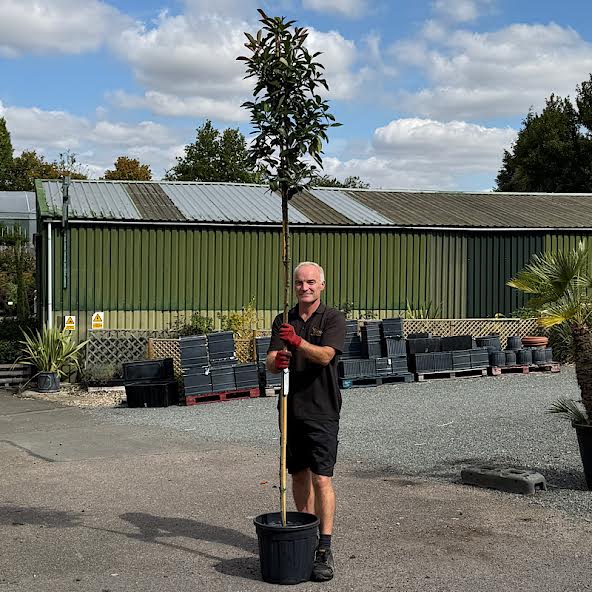
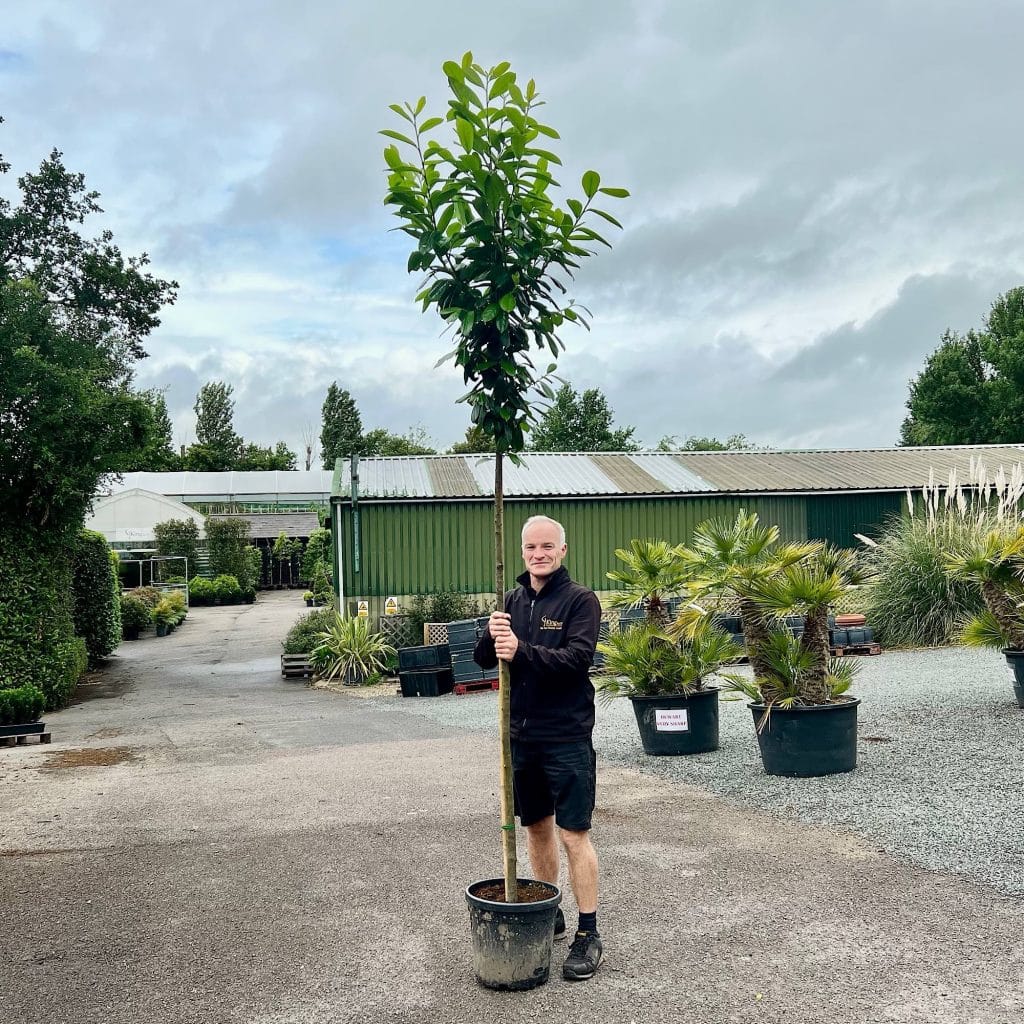
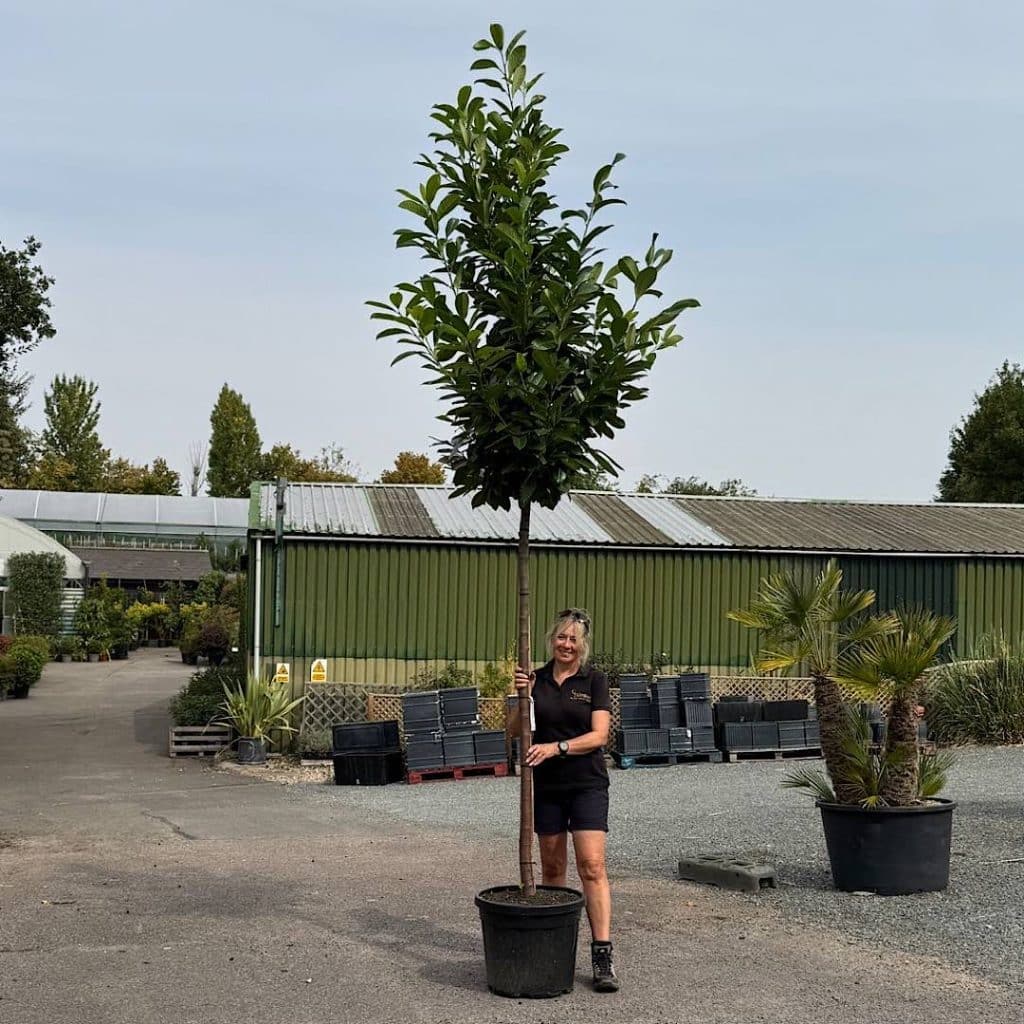
We stock Ilex ‘Nellie R. Stevens’ standard trees too! This hardy evergreen features dark green, glossy leaves with far fewer spines than common Holly, making it easier to handle in gardens and along pathways. In spring, small white flowers appear. Then, in autumn, bright red berries provide a striking contrast. Because ‘Nellie R. Stevens’ is a self-pollinating hybrid, it produces berries without the need for a male or female companion plant.
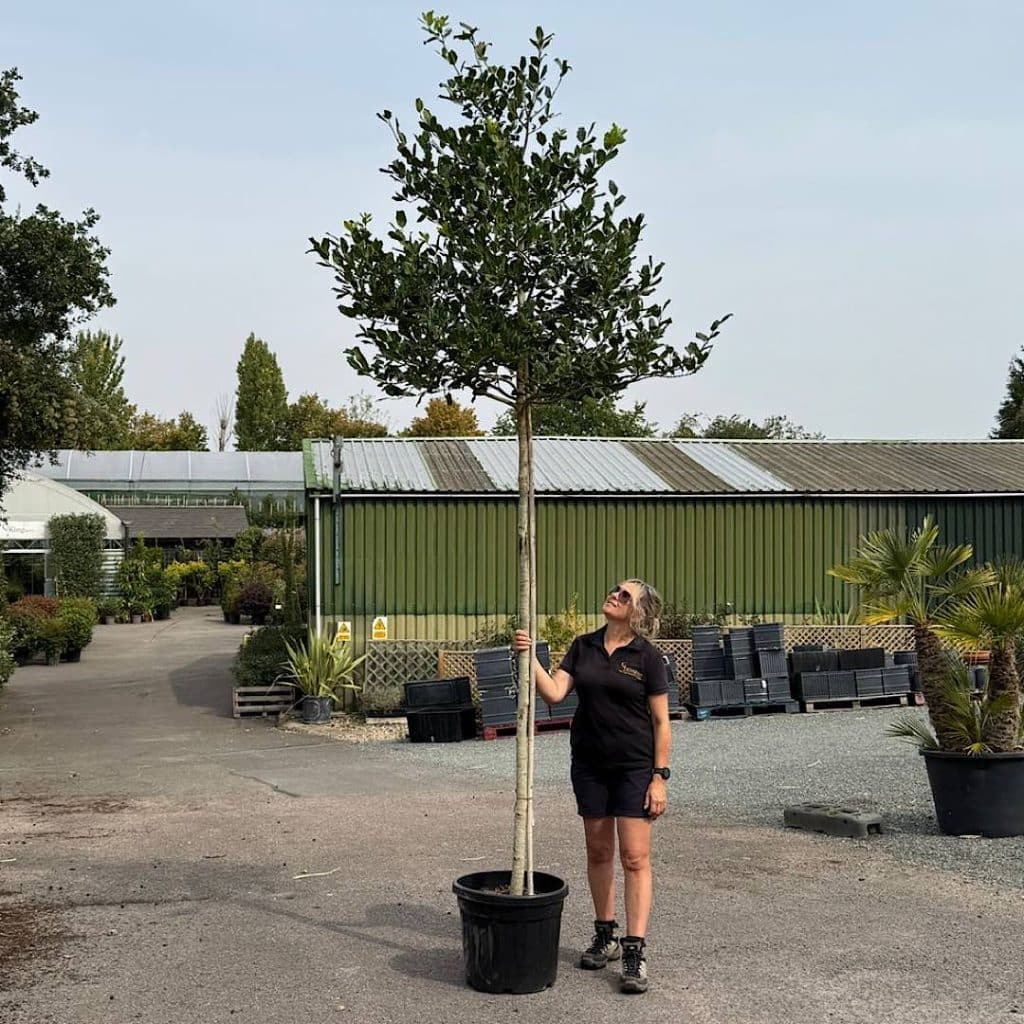
In addition, we stock a range of pleached trees at the nursery. These also have 1.8 m clear stems, but their foliage is trained flat onto a frame. As a result, pleached trees are perfect for narrow borders and tight spaces. You can also plant them along boundaries or pathways without sacrificing valuable ground space.

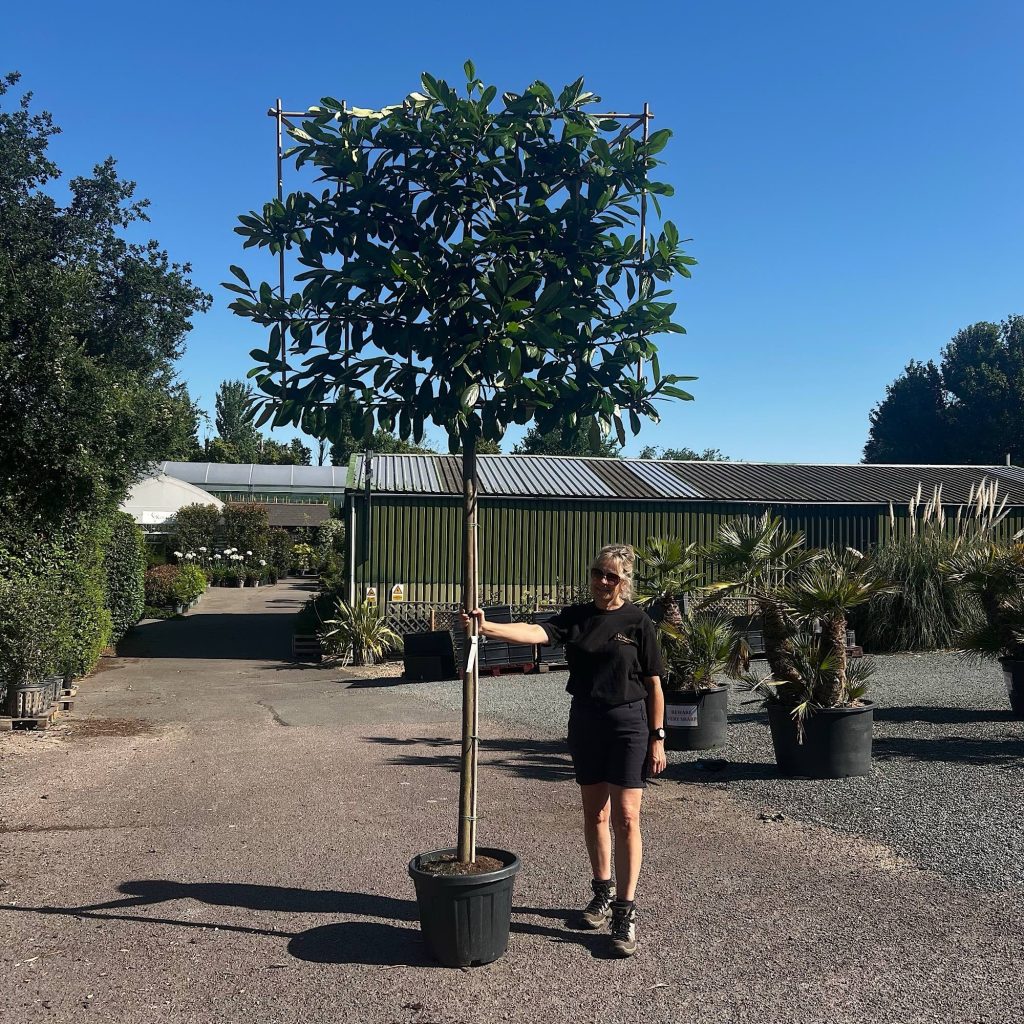
Although evergreens are great for creating year-round privacy and coverage some people prefer to plant semi-evergreens as they tend to have a softer appearance in the winter months. Some of the main benefits of planting semi-evergreens are:
Partial Privacy. Retain some of their foliage through winter, though they may lose some leaves in colder months (especially in harsher conditions). This means that they will continue to offer some level of screening.
Seasonal Interest. With varieties like Hornbeam their foliage changes with the seasons. This helps to add visual interest while still maintaining some level of screening.
Access to Light. When the foliage dries up or drops off in the colder months it means that light is able to access the garden. This helps to brighten up gardens that are lacking in colour (owing to the time of year).
One of our favourite ‘semi-evergreens’ is Hornbeam (Carpinus betulus). Although Carpinus betulus is deciduous, it hangs onto its leaves long into the winter, making it a useful screening tree. It is a popular/effective option for screening, instant hedging and structure. Seen below in ‘feathered’ form, this Hornbeam has branches from ground level. It can be trimmed and shaped and responds well to pruning.
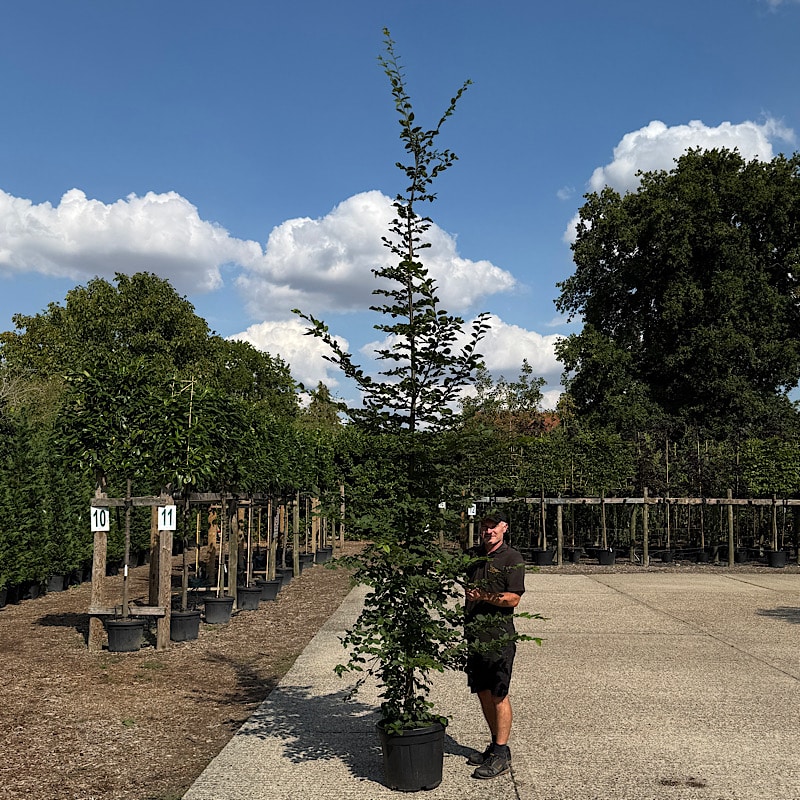
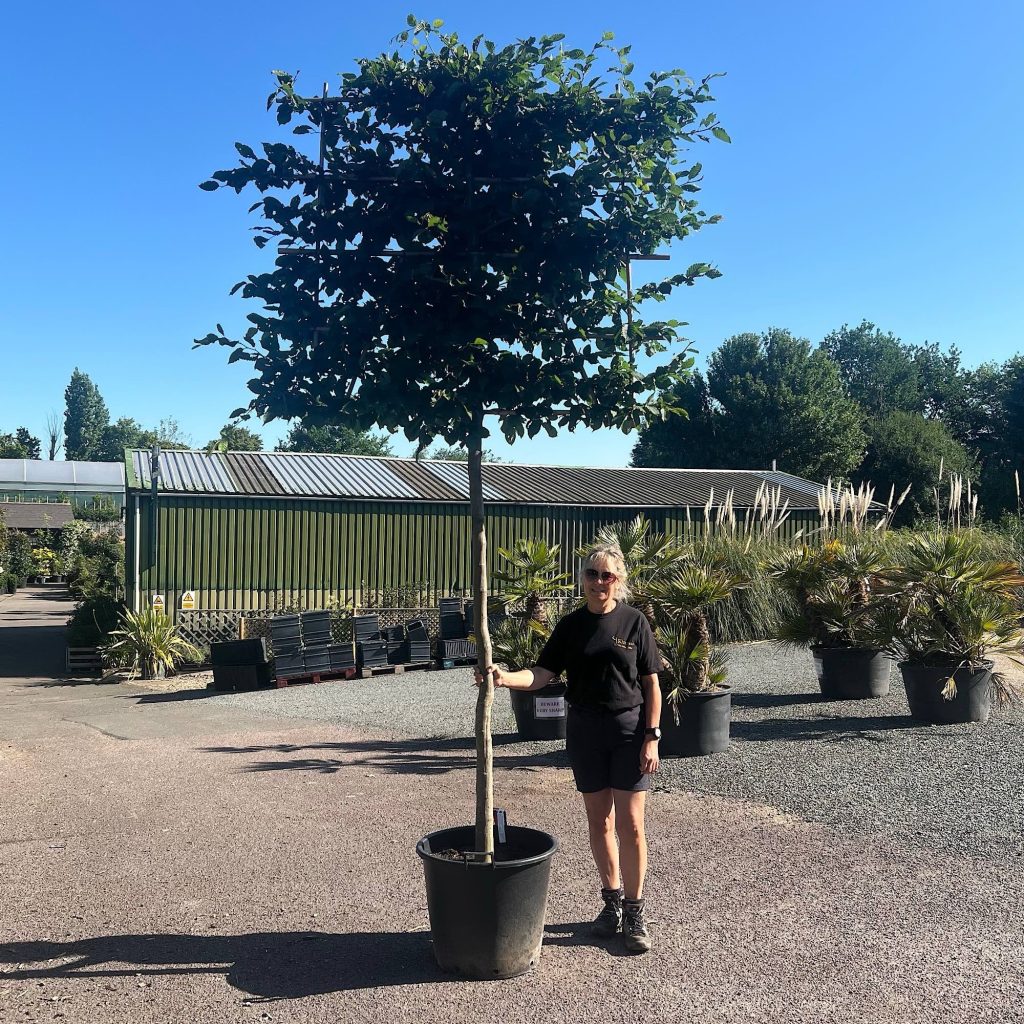
As summer fades, your landscape doesn’t have to lose its charm. In fact, autumn offers a chance to add bold colour and texture to your landscape. With the right trees, you can enjoy vibrant leaves, striking bark, and even late-season berries. Let’s explore our top 5 trees for autumn interest!
Liquidambar styraciflua ‘Worplesdon’ is a large, deciduous tree that offers excellent winter interest for several reasons. As the tree matures, its grey-brown bark changes from smooth to deeply fissured and corky. This textured bark adds strong visual appeal during the bare winter months.
In addition, its bold branch structure stands out once the vibrant, maple-like leaves have fallen. These leaves, which emerge green in spring, turn brilliant shades of yellow, red, and purple in autumn. They also have deeper lobes than other Liquidambars, adding extra character. With its textured bark and strong winter form, ‘Worplesdon’ keeps your landscape visually engaging all year.
This large, deciduous shrub offers strong year-round appeal. In spring, it produces small greenish flowers, followed by purple-red berries that split open to reveal bright orange seeds. As autumn arrives, its oval, dark green leaves turn a brilliant red, creating a spectacular display.
Winged Spindle also shines in winter. Once the leaves fall, the stems reveal thin, raised ridges known as “wings.” These corky edges add striking texture and structure to the bare winter landscape, and give the plant its common name. Thanks to this unique feature, Winged spindle remains visually interesting even in the coldest months.
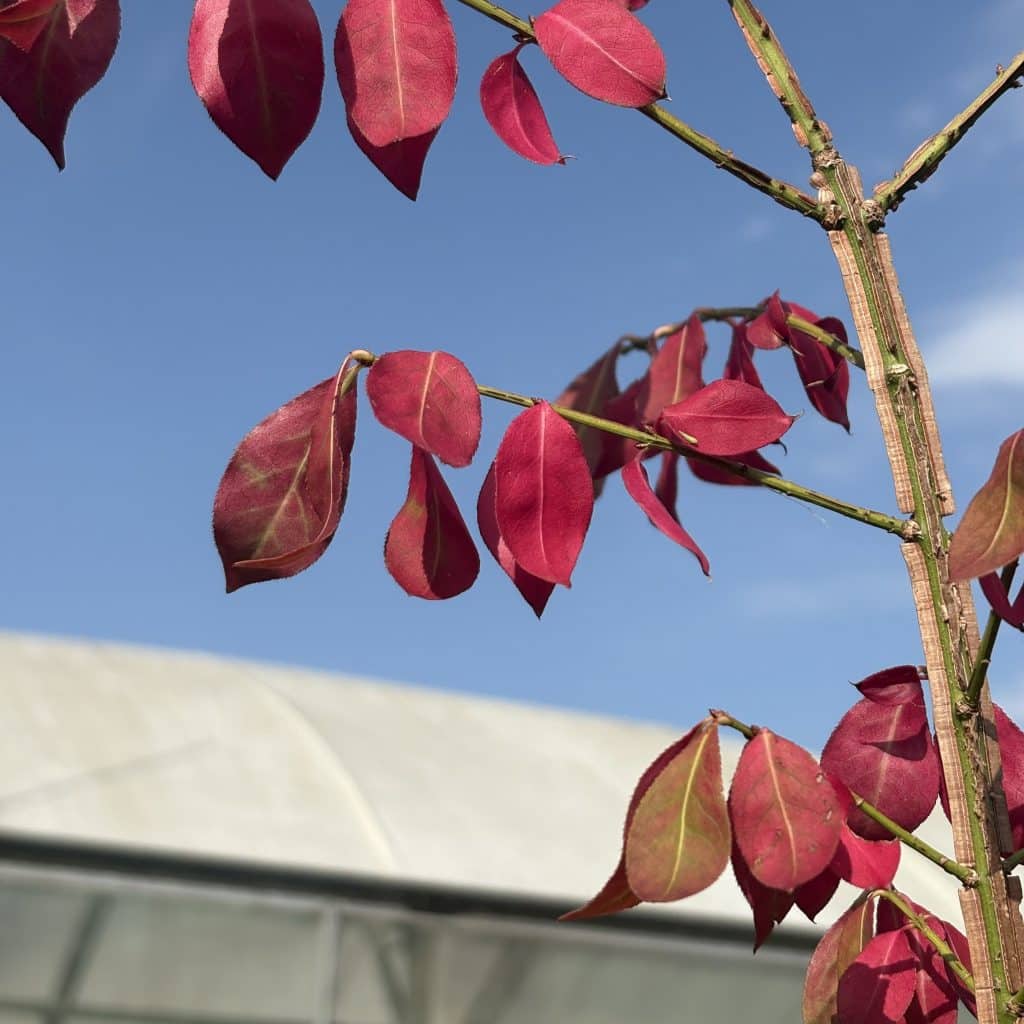
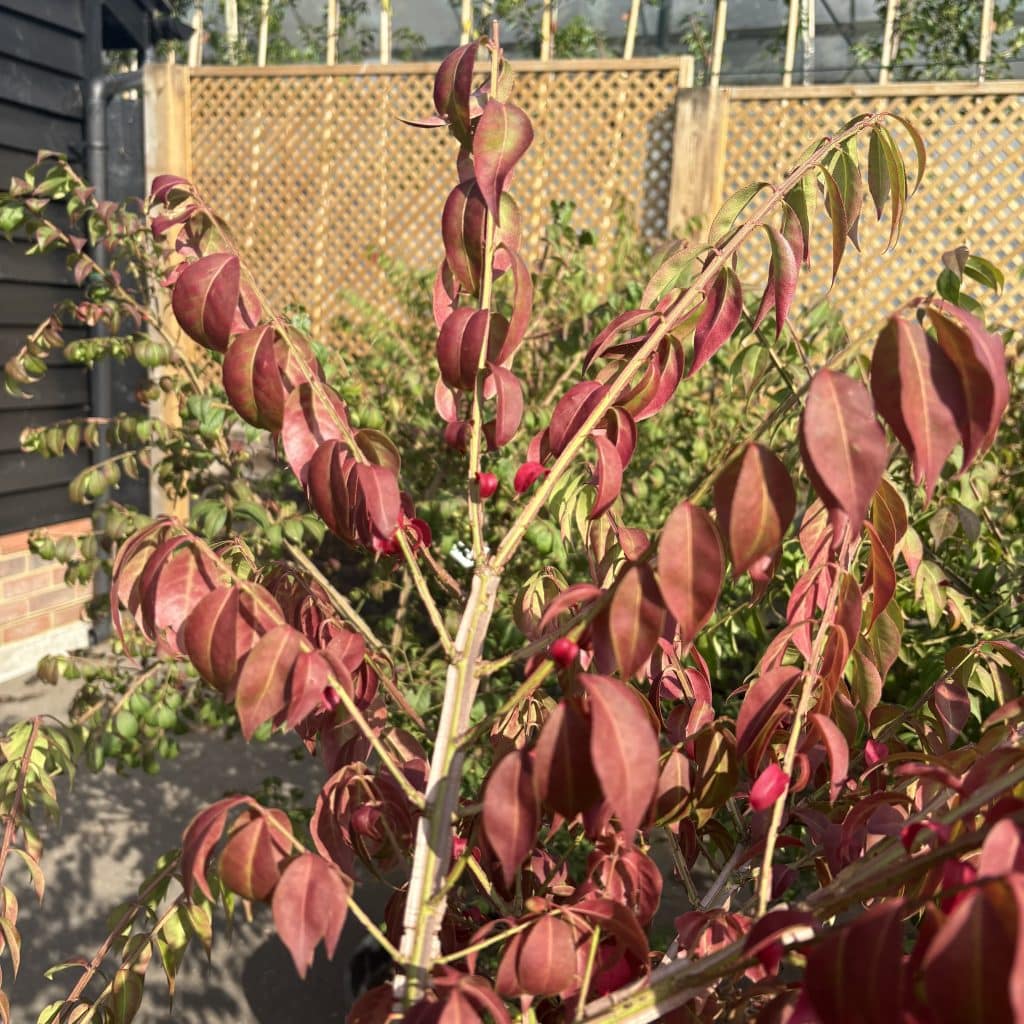
Amelanchier lamarckii is perfect for adding year-round beauty to your garden. In early spring, star-shaped white flowers cover the branches, followed by small purple-black berries in summer. The leaves emerge with a soft bronze tint, turn green in summer, and then glow orange and red in autumn.
As winter approaches, its elegant branch structure becomes more prominent, especially when grown as a multi-stemmed tree. This form provides structure, seasonal interest, and light cover even in the colder months.
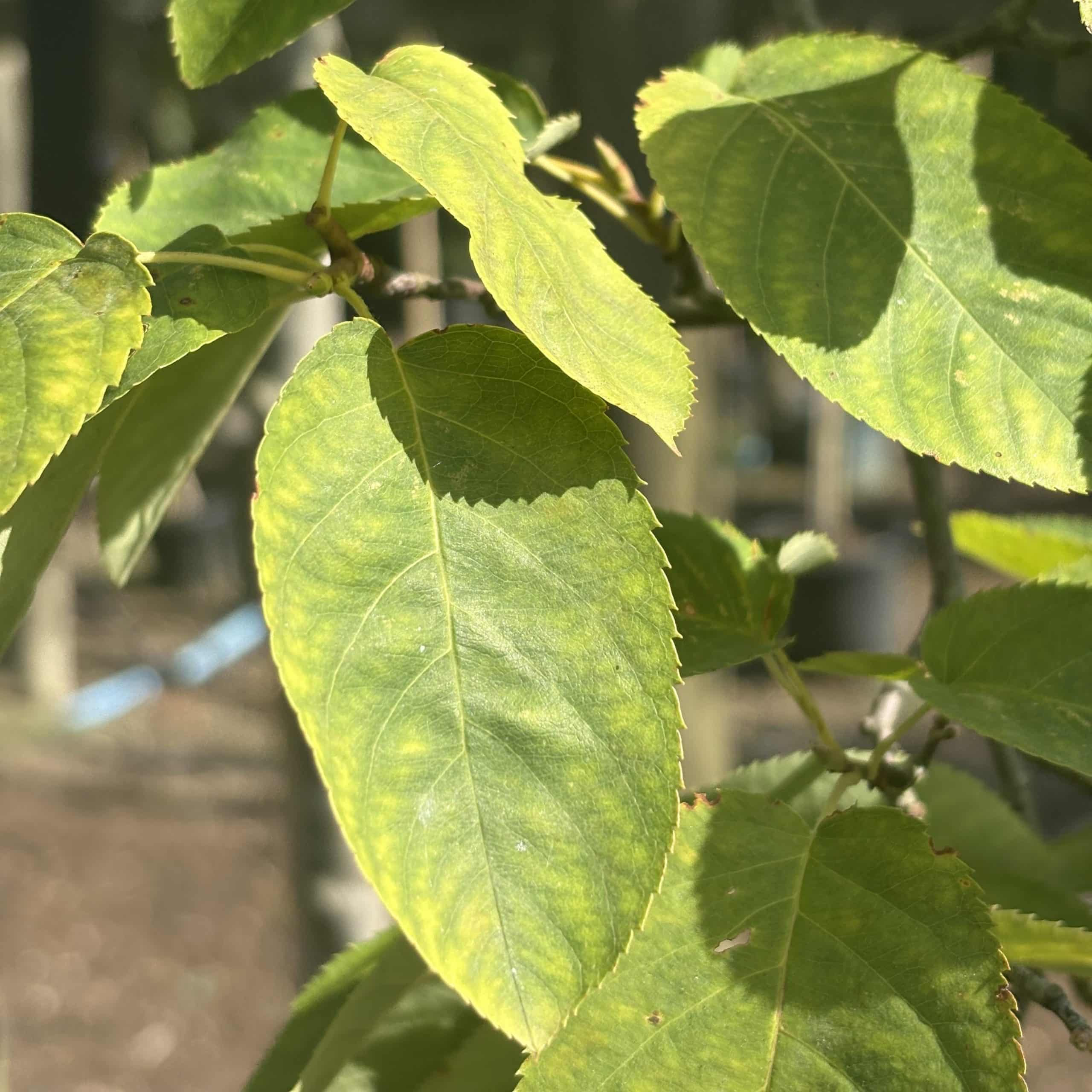

Crataegus ‘Paul’s Scarlet’ stands out for its beauty, structure, and year-round appeal. In spring, it puts on a vibrant show with clusters of double, pink-red flowers. As the seasons shift, its glossy green leaves turn golden yellow, while bright red berries add a splash of autumn colour and extend interest into winter.
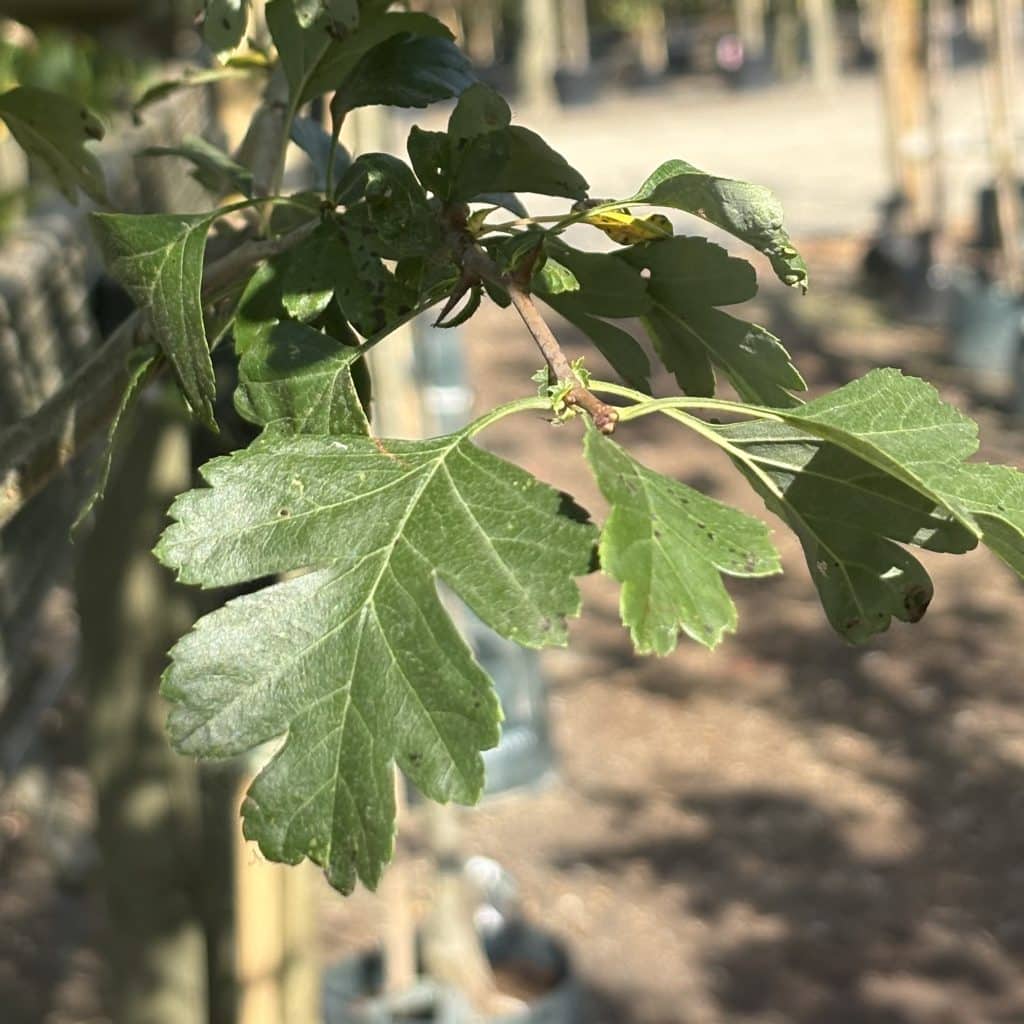

Sorbus aucuparia, also known as the Rowan or Mountain ash, is a great choice for year-round interest (especially in the colder months).
In spring, it produces clusters of white flowers. By autumn, these are replaced by bright red berries that last well into winter. These berries add strong colour to the bare landscape and attract birds, bringing life to your garden. As the leaves fall, its upright shape and open branching also helps to provide structure and texture. It is a valuable addition to any garden!
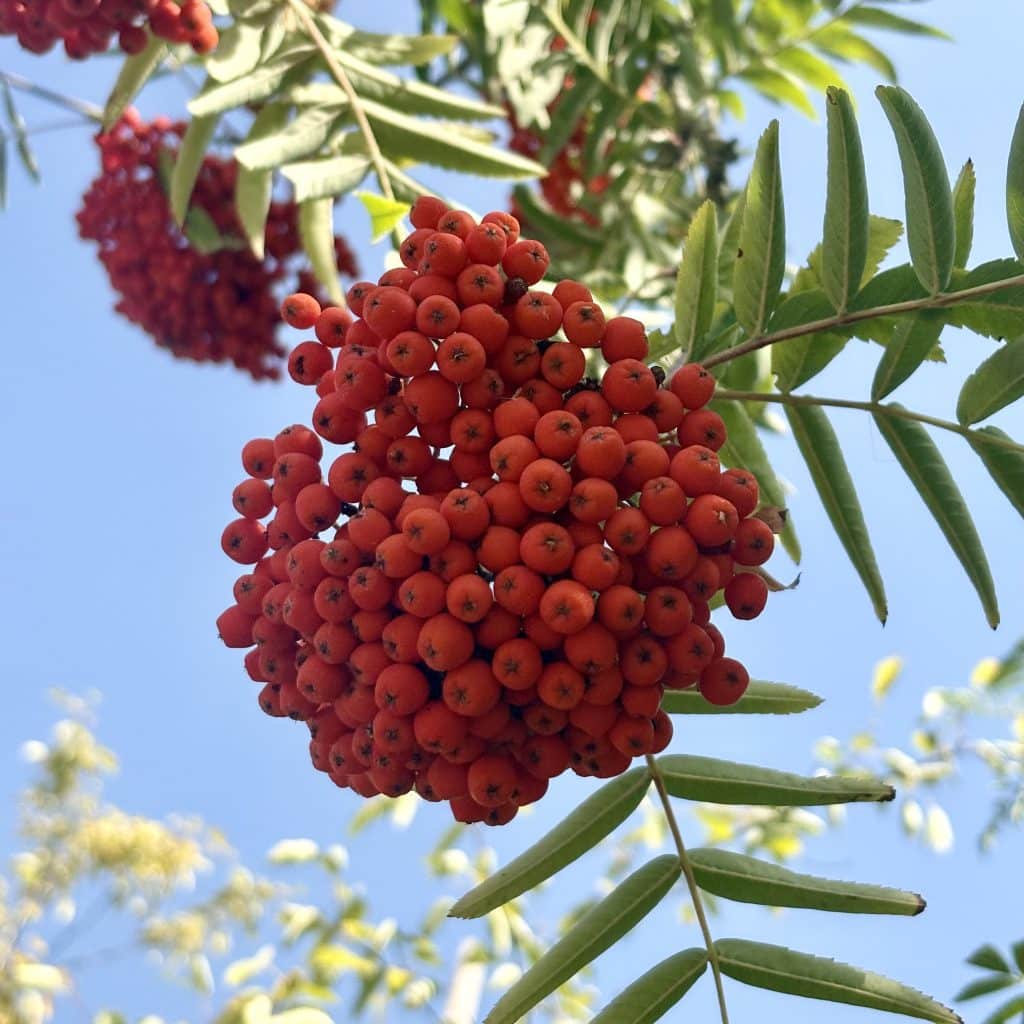

When can I plant a new tree?
Container grown trees can be planted all year round. Watch our video guide on how to professionally plant and stake your tree!
How often should I water my tree?
As a guide, we recommend giving each tree 5 litres of water every other day during the growing season. The water should be directed at the base of the trunk.
5 Litres is a good starting point to make sure that the ground stays moist. If the soil starts to become saturated or dry adjust the amount as required.
Can you plant my tree for me?
We can offer our planting service if you are local to the nursery. Planting prices are dependent on the size of the pot. Please contact us if you would like a quote.
The dormant months are fast approaching and we’re preparing to help horticultural professionals get ready for another busy planting season. With over 45 years of industry experience, we offer an extensive selection of bare root and root balled hedging in addition to container grown trees and hedge plants. Importantly, the Nursery has retained its Plant Healthy certification for another year, an essential factor when considering tree and hedging suppliers for professional projects. In this tree and hedging guide, we’ll walk you through the best times to plant, how to choose the right trees and hedging for each site, and share our top aftercare tips to ensure long-term success.
The optimal time to plant is from November to March. This is especially important for bare root and root balled hedging, which can only be lifted and planted during the dormant season. In contrast, container-grown trees can be planted at any time of year, as long as they receive proper aftercare. Each planting method has its own benefits:
Bare Root Plants: These are the most cost-effective option. They work well for large-scale planting over long distances and need less ongoing maintenance.
Root Balled Stock: These allow for larger, more mature plants at a lower price than container-grown options. Since they’re heavier, they’re often available for local or dedicated deliveries only.
Container Grown Plants: These offer the most flexibility. They can be planted year-round, travel well, and are much lighter than root-balled plants. That makes them ideal for quick, nationwide shipping.
Choosing the right plants starts with understanding the site. Some species simply won’t thrive in certain conditions. For example, Laurel prefers moist, well-drained soil, while Yew tolerates dry conditions. Similarly, Hornbeam performs well on heavy clay but Beech is better suited to lighter soils.
At King & Co, we offer tailored advice to help you select the best trees and hedging for your project. Need shorter stem-height screening trees for raised beds? We can help with that too. Just get in touch with the nursery, we’re happy to recommend the right options.
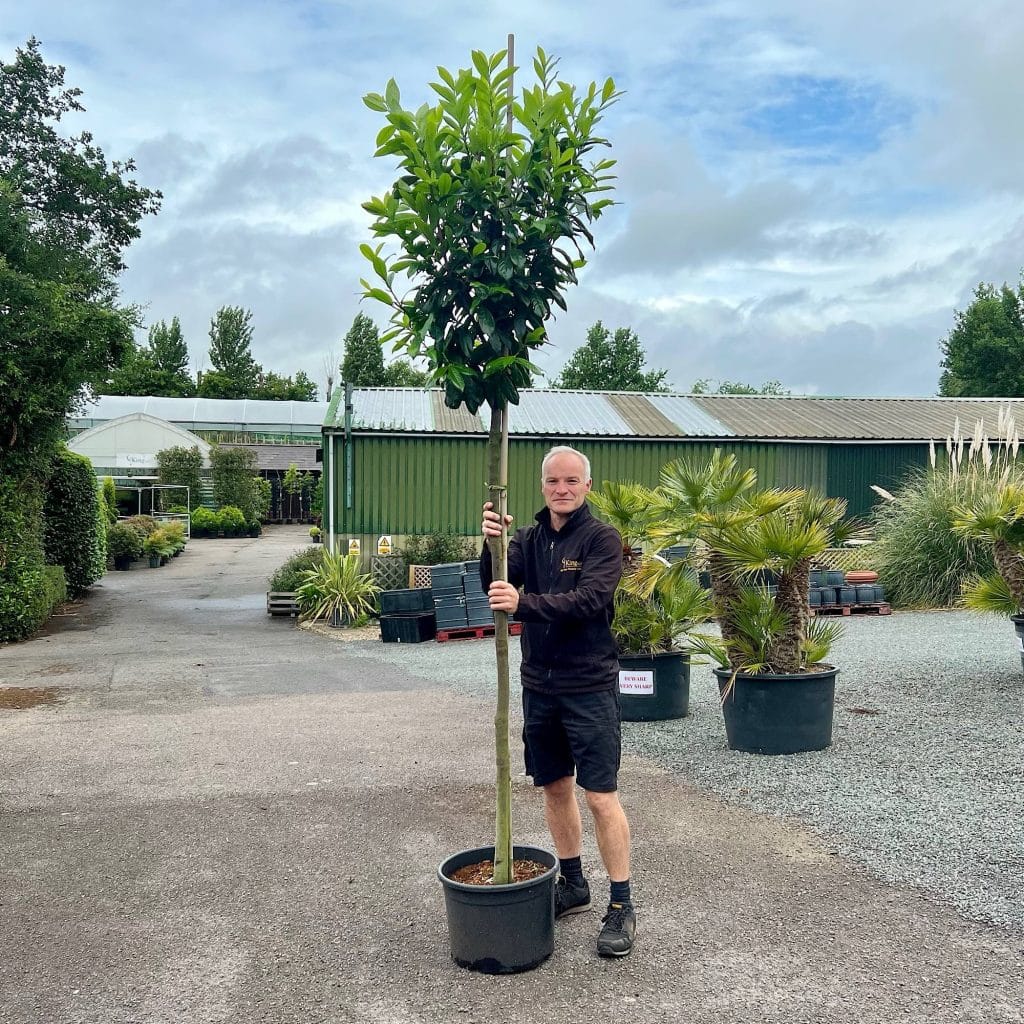

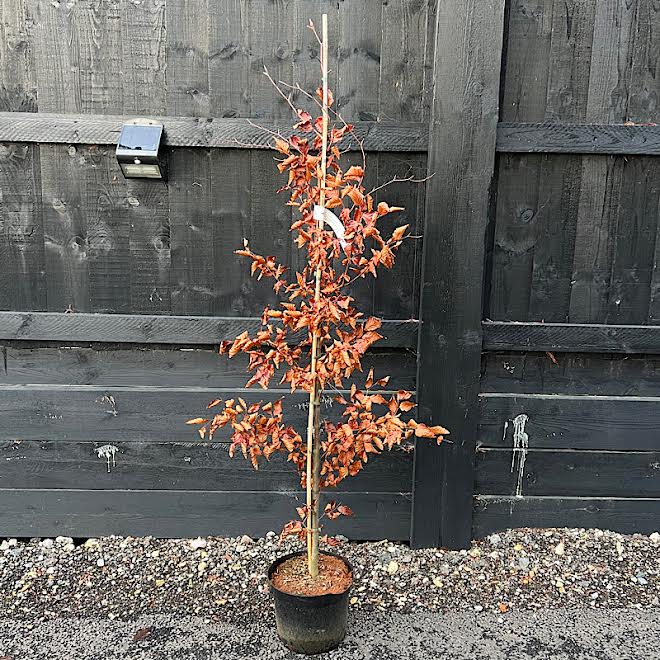
Screening trees are by far our most requested product. As new housing developments continue to rise, many gardens are left exposed, prompting demand for smart, effective privacy solutions.
We supply both pleached trees, with foliage trained flat onto a frame, and standard trees, which have a natural, bushy head of foliage. Standards are the more budget-friendly option. Both forms are a popular option for screening above a fence line while maintaining open space below. We offer a wide selection of screening trees with 1.8m (6ft) clear stems, perfect for underplanting.
For evergreen coverage, our most popular options include Photinia ‘Red Robin’, Laurel, and Holly. If year-round greenery isn’t essential, Hornbeam offers a classic, deciduous alternative that brings structure and texture to the garden.
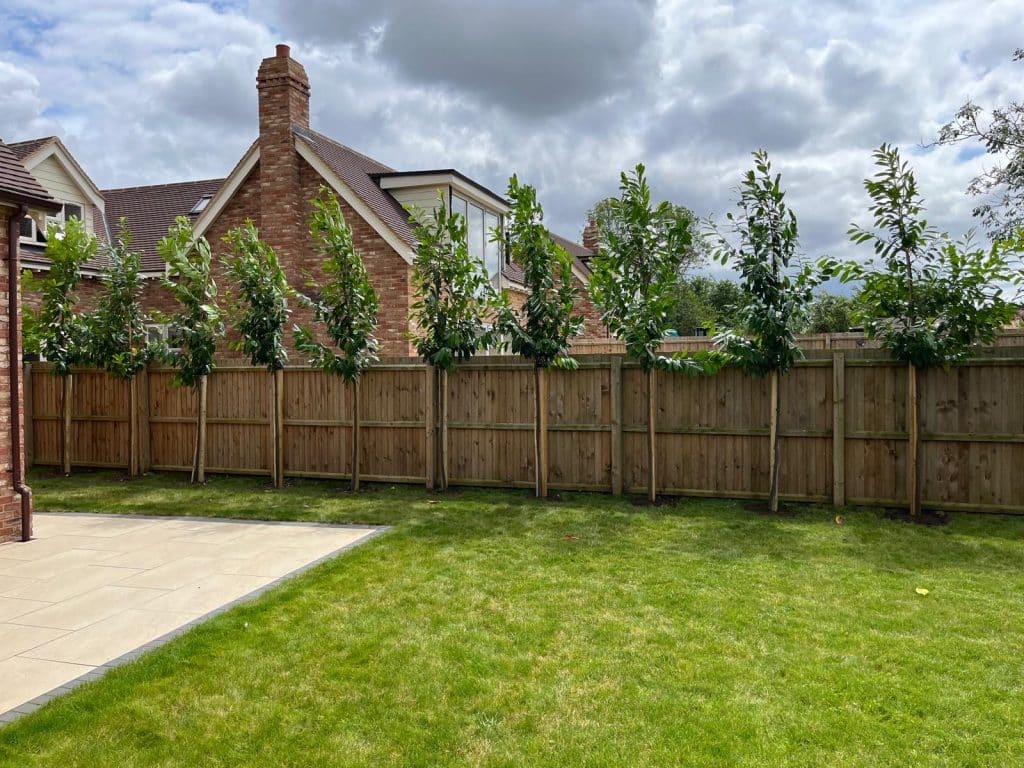
Before your delivery arrives, make sure your site is ready to receive and store plants correctly:
Bare root plants must be kept sheltered and moist immediately upon delivery
Root balled trees should be planted with their hessian and wire cages intact
Container plants should have their pots or growing bags removed just before planting
One of the most common causes of failure is planting too deep. The basal flare of the tree should be no deeper than ground level. Planting deeper than this suffocates the roots and induces anaerobic respiration. We also recommend that stake and tie each tree with adequately sized stakes. This will help to stabilise the tree while roots establish.
Once your trees are planted, consistent watering is essential. Good aftercare, especially in the first two growing seasons, makes the difference between success and failure. In fact, poor aftercare is the most common reason plantings don’t survive.
To begin, we recommend giving each tree 5 litres of water every other day. This is a general guide to keep the soil moist. You may need to adjust based on soil type and species. Always water directly at the base to ensure moisture reaches the roots effectively. If regular watering isn’t feasible, consider using irrigation aids like watering bags.
Don’t forget that even frequent rainfall is often not enough to keep newly planted trees properly hydrated!
Check out our article on watering newly planted trees!
Ordering is easy. If you know what you need, you can place your order online. If you’re unsure, just give us a call or send an email, we’re happy to help with advice, recommendations, or planting plans. Want to see before you buy? We can send photos of current stock on request. Or better yet, visit us in person and hand-pick your plants from the nursery.
Hopefully this tree and hedging guide was helpful! Remember, we’re here to support you with quality stock, expert advice, and dependable delivery.
Choosing a planting style for your garden brings visual harmony to your outdoor space and helps guide your plant choices and layout. At King & Co, we’ve curated some of our favourite planting styles to inspire your next project.
Whether you prefer the clipped precision of a formal garden or the relaxed wildness of a native one, there’s something to suit every taste. Explore our favourite styles below and discover the one that best reflects your space and lifestyle!
Formal gardens are know for their clear structure, strong lines, and often symmetrical layouts. To maintain this sense of symmetry and order throughout the year, evergreen plants are frequently incorporated. Some of our favourite plants for this style of garden include:
Euonymus japonicus ‘Jean Hugues’ is an excellent alternative to Box, especially since it’s resistant to Box blight and Moth. This plant is perfect for creating small, formal hedges and is ideal for lining pathways. Its upright growth and tough leaves also make it suitable for geometric topiary.
Bay (Laurus nobilis) is a versatile evergreen perfect for creating a statement. At King & Co we usually stock Bay trees as clipped topiary, or as half or quarter standard trees. Their dense foliage and ability to withstand regular pruning make them highly suitable for shaping in formal gardens.
Olive (Olea europaea) can soften geometry with graceful, silvery foliage. Regular trimming can maintain a lovely round shape, or it can be left to develop into a larger sphere or a charming small tree.
All three options complement stone or slate paths beautifully. Both stone and slate are popular choices for formal gardens because they create sharp, clean lines. Pairing the plants we discussed with these materials would enhance the structural clarity of the garden and create a superb environment for enjoying quieter moments.

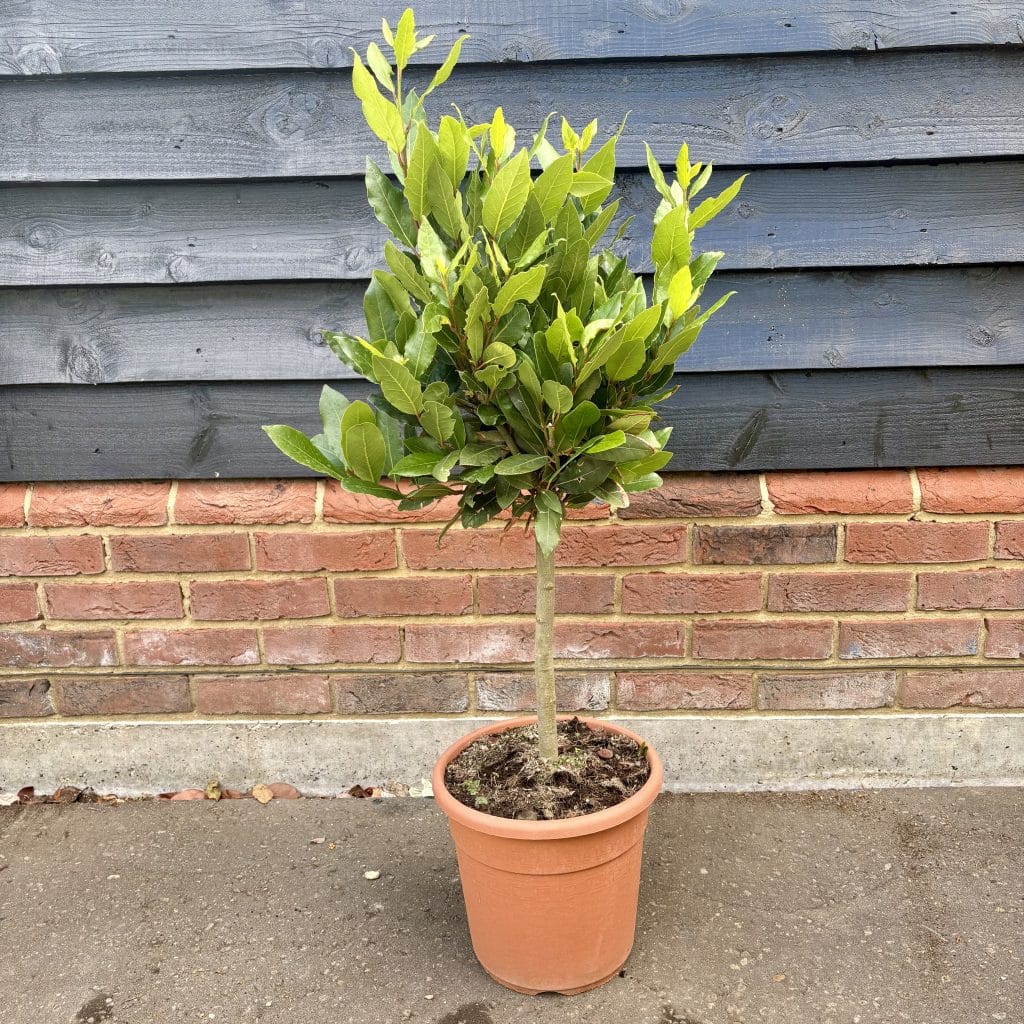
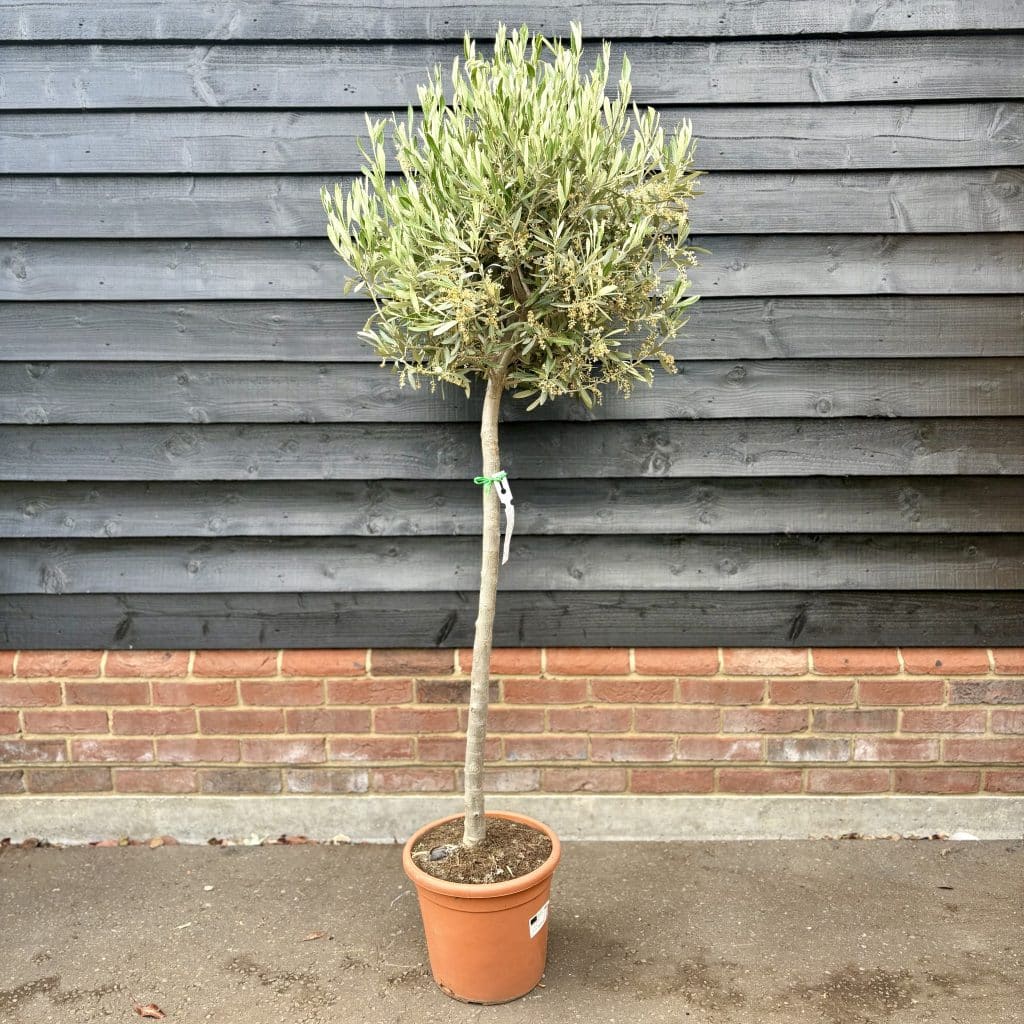
Tropical garden designs are renowned for their striking impact, structure, and form, achieved through a combination of large-leaved foliage and contrasting colors. Selecting plants with these characteristics is essential to capture the essence of this planting style. Incorporating a water feature can further enhance the tropical ambiance by replicating soothing natural sounds. This can be achieved effectively with a pond, waterfall or a fountain.
Aucuba japonica, also known as Spotted laurel, features large, leathery, and glossy green leaves that are often splashed with golden-yellow spots or variegation. Its broad, vibrant foliage is similar to that of many tropical plants.
Bamboo (Phyllostachys) has tall, slender canes and feathery leaves, that evokes the imagery of jungles and tropical forests. It’s an excellent choice for creating a lush, exotic feel.
Phormium, commonly known as New Zealand Flax, has distinctive long, strap-shaped leaves fan out elegantly, creating a striking silhouette. This plant is perfect for adding structure and mirrors the bold, sculptural look often associated with tropical plants




Trachycarpus fortunei is another good choice for tropical gardens. Its large, dark green, fan-shaped leaves resemble the lush palms of rainforests, enhancing the tropical feel of any space. The stout, fibre-covered trunk further contributes to this exotic appearance.
Italian-inspired planting schemes, much like formal gardens, are characterised by their emphasis on structure, balance, symmetry, and a strong sense of design. These schemes often feature a variety of evergreen plants to ensure year-round structure and visual contrast. Additionally, they frequently incorporate architectural elements such as benches, statues, and fountains, which further enhance both structure and vertical interest within the garden.
Ilex crenata is popular alternative to Box, especially since it’s resistant to Box blight and Moth. With dense foliage that responds well to clipping, it is an excellent choice for maintaining ball or cone shapes. These clipped forms look particularly striking when planted in terracotta pots.
Cupressocyparis leylandii, commonly known as Leyland Cypress, is an excellent choice for Italian-style gardens, particularly when shaped into spirals, cones, or double pom-poms. These forms reflects the classical Renaissance aesthetic found in the gardens of Tuscan villas and Roman estates.
Italian cypress (Cupressus sempervirens ‘Pyramidalis’) has a tall, slender form that is synonymous with the Italian landscape. Its narrow, upright growth creates a stunning vertical accent, perfect for the symmetry and geometry associated with the Italian planting style.

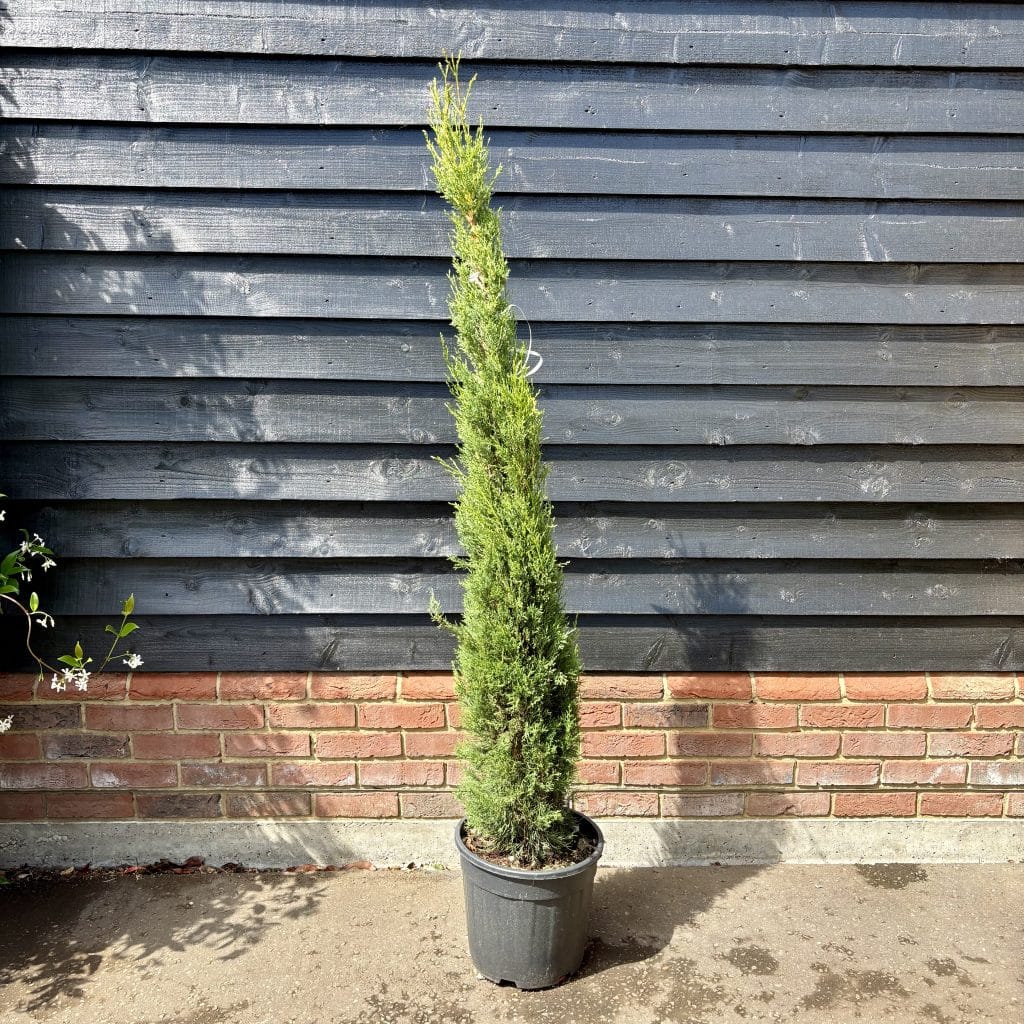
Magnolia grandiflora is not native to the Mediterranean, but its formal shape, rich texture, evergreen presence, and stunning flowers make it surprisingly compatible with Italian-style garden aesthetics. It brings structure and softness, especially when paired with hard surfaces and clipped forms.
All of these plants would pair beautifully with natural stepping stones, arbors, or gazebos. Gentle topiary and water features would also enhance the authentic Italianate style.
A native-style garden in Britain focuses on celebrating the natural beauty, character and biodiversity of Britain’s own flora. It reflects local landscapes and often blends seamlessly with the surrounding environment.
British‑provenance trees like Silver birch, Rowan, Field maple, Oak and Wild cherry are excellent choices for native British gardens because they support biodiversity, offer seasonal interest, and reflect the natural character of the UK landscape. They also provide gardens with canopy and structure.
Native shrubs such as Dogwood, Hazel, Hawthorn, Spindle, and Sweet Briar are excellent choices for underplanting. Underplanting helps create structural layers, supports local wildlife, and enhances the natural aesthetic of the landscape. Evergreen shrubs like Holly and Yew provide year-round support for wildlife too.
Native hedging is an excellent choice for enhancing boundaries in planting schemes. Our hedging packs typically feature a mix of species such as Hawthorn, Field Maple, Hazel, Dogwood, and Dog Rose. These native plants can be effectively planted in staggered double rows to provide winter interest, food for birds, vibrant autumn colours, and natural screening. Incorporating thorny species like Hawthorn can act as a natural deterrent to discourage unwelcome visitors too.


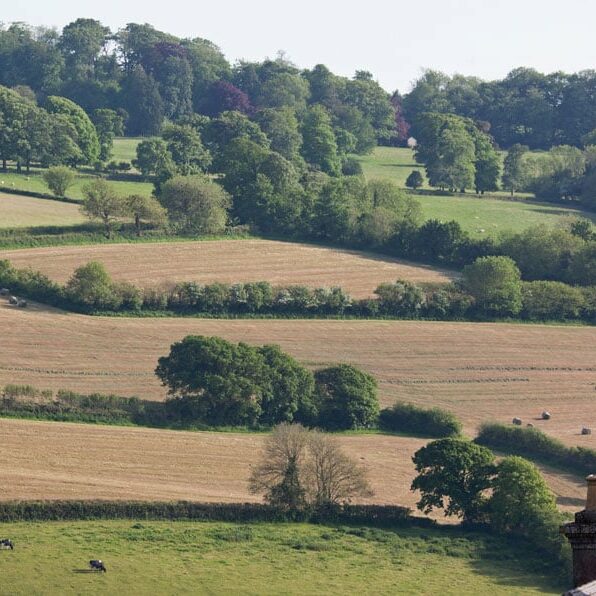
If you want to see the best results from your newly planted tree it’s essential to provide the right care, especially in its early years! From soil preparation to proper watering techniques and maintenance, these tree care tips will help to support healthy tree growth.
For the best results, we recommend improving the soil quality of the planting site before installation. You can do this by digging larger holes and incorporating multi-purpose compost and organic matter, such as well-rotted animal manure, into the backfill. If the drainage is poor, it is better to completely replace the soil and add a 2-3 inch layer of pea shingle at the bottom of the holes. This will help improve drainage and ensure that the tree roots are not sitting in water.
Once you are ready to plant, you can apply a rootgrow mycorrhizal fungi at the base of the planting pit. This supports root development, eases transplant shock, and improves nutrient uptake. You can also mix a slow-release fertiliser into the backfill soil at planting time. This gives your tree a nutritional boost over time, promoting healthy root growth, flowering, fruiting, and improved drought tolerance.
Tree staking is crucial for successful tree planting, as it protects the roots during establishment and keeps the tree upright and stable. You have the option to single or double stake your trees. Single staking is suitable for less exposed sites, while double staking is recommended for windier areas.
We have created a step-by-step video guide that demonstrates the double staking method for trees. If you’re concerned about doing this yourself, we offer a professional planting service where our highly trained team will install your plants with all the necessary accessories. Please note that this service is available only to customers who do not require soil improvement, as we use only spades and no machinery.
Proper watering is crucial for the growth and health of your tree. Keeping the soil moist will aid root development and help trees cope with environmental stressors such as heatwaves and dry spells.
Water in the early morning or evening. Morning watering allows the tree to absorb moisture during the day, while evening watering minimizes water loss due to evaporation. Avoid watering during the heat of the day, as much of the moisture will evaporate before reaching the roots.
Consistent, thorough watering is key to keeping moisture levels stable. As a guide we recommend that you give each tree approximately 5 litres of water every second day (over the growing season). This volume should keep the soil consistently moist, but you should regularly check the soil to make sure it’s not getting too wet or too dry.
Its important that the trees are not over or under watered. If the soil dries out it can cause stress to the tree, if it becomes oversaturated then the roots will not be able to access oxygen in the surrounding soil. In these instances adjust the volume as required. Please note that rainfall is often insufficient, especially during dry periods.
Direct water at the base of the trunk, ensuring it soaks into the soil around the roots. Avoid watering the leaves, as this can cause fungal issues or leaf scorch. Use a rose attachment on your hose or watering can to reduce runoff and help water absorb more effectively.
For added convenience, consider installing a tree watering bag or using a root rain irrigation system. These tools deliver water slowly and directly to the root zone, encouraging deep root growth and long-term resilience. Tree watering bags are especially helpful if you’re going away on holiday!
Regular pruning helps shape the tree, encourages bushier growth, and removes dead or damaged branches.
Late Spring to Early Summer (after flowering): Encourages the trees to become bushier with more branches. When you trim each branch, aim to remove no more than one-third of its total length. This method helps promote denser growth in the lower and central parts of the plant.
Early September: Shorten any particularly long branches by up to one-third. This pruning session helps to tidy up the plant and establish a nice, even shape for new growth in the spring. Pruning around this time also allows any new shoots to become more resilient before the arrival of winter frosts (don’t prune much later than this).
1. Keep the area around the base of your tree weed-free to reduce competition for water and nutrients.
2. Apply a slow-release feed and mulch as a top dressing. This will add nutrients to the soil, help retain moisture, and regulate soil temperature. Just be sure not to pile the mulch against the tree stem.
By following these tree care tips, you can give your tree the strong start it needs and enjoy the benefits of healthy growth for years to come!
You can buy trees, hedging, shrubs and topiary online by browsing our website.
If you do not see a plant or size that is suitable for you then please call as we stock a wide variety of plants in our tree nursery. It’s worth noting that many other websites sell other people’s stock (i.e. they act as an agent) so you cannot view the products at their own site. At King & Co, all of our advertised plants are available for viewing at our tree nursery in Rayne, near Braintree, situated just over an hours drive out of London.
Our knowledgeable and experienced tree nursery staff are always contactable via phone on 01376 340469 or if you have any questions regarding any of our trees or accessories.
If you cannot see what you require on our website, please complete the enquiry form. We will give it our urgent attention and will get back to you shortly with a solution that meets your needs.
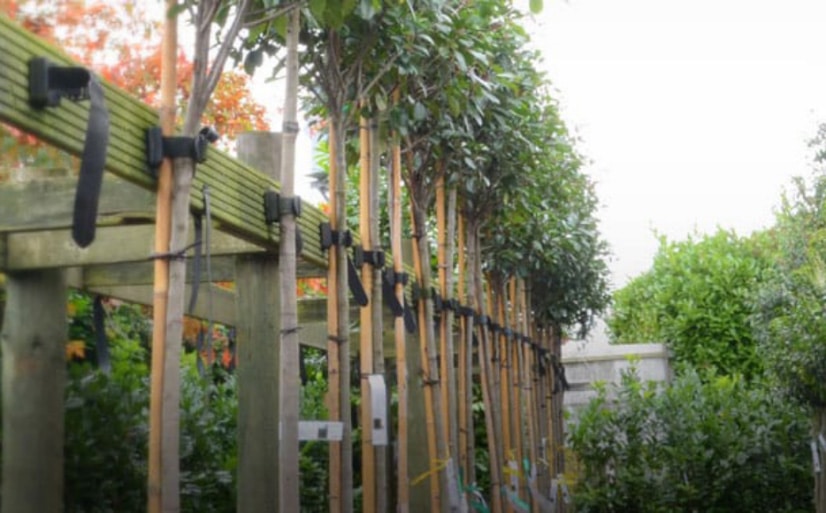
If you are looking for specific evergreen trees, Photinia, Leylandii hedging, Leylandii trees, instant hedging or shrubs, use the search bar at the top of the page